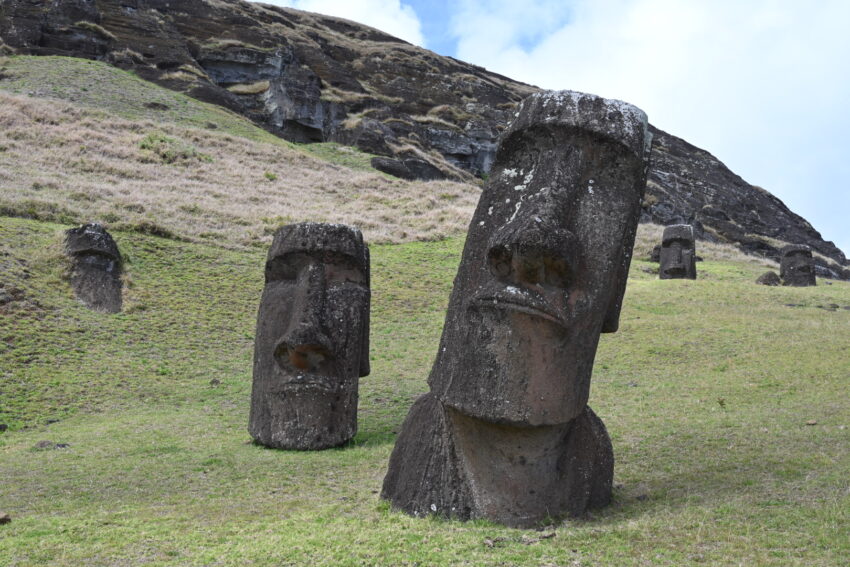Today’s Chronicle can be found here.
One last late-ish sleep-in before we (hopefully) make landfall again – but not too late, as we need to make Alex’s 9 am lecture – “When the Universe was an Island: The History of Rapa Nui”:
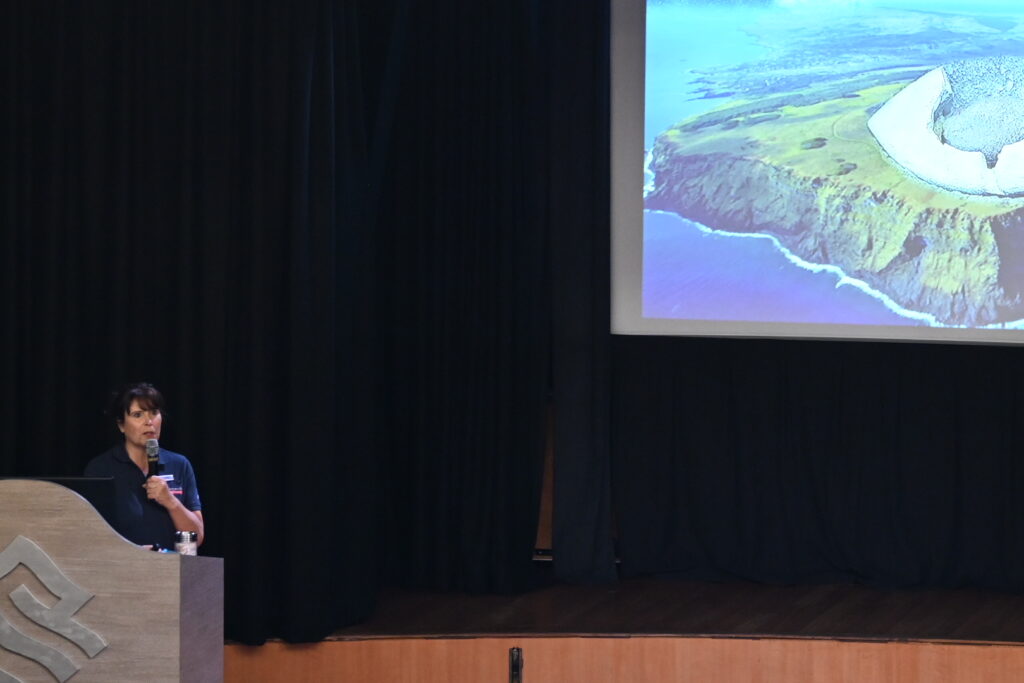
It’s a fitting title, as there was an extended period during which Rapa Nui had no contact with the outside world – and, as such, their universe was essentially their own island.
I was amazed to hear that there are more than 22,000 archaelogical elements on the island, and that Rapa Nui family lines could essentially be reconstructed from the the stones that made up a family’s house – many of which came from their ancestor’s houses. Also fascinating to learn that the technique used to make the moai statues was similar to how obelisks were constructed in ancient Egypt.
And while the current theory is that the statues were essentially “walked” from the quarry to the beach using ropes, Alex believes that the method of transportation is still an open question – she argues that the bases were angled at the back, which would have made “walking” them exceedingly difficult. It might have been possible to use trees as rollers, but Alex believes there were not sufficient trees on the island for this purpose. It seems likely a variety of transport methods may have been used depending on the size of the moai – they got much larger and consequently heavier as time went on.
Off to trivia – bit of an argument today over the identity of the Roman god of agriculture. Soraia stated that it was Saturn, while our son countered that it was Ceres, the Roman counterpart to Demeter. But we did ultimately accept that the entertainment host is always right, even when they’re wrong – so (eventually) let the matter drop.
We did well overall. My son knew that Timbuktu is located in Mali, and that the asteroid belt is between Mars and Jupiter. We learned that the sport of gentlemen is cricket (and not polo, as I’d guessed). Our usual 13 / 16 score was sufficient to once more get second place.
Off to La Terrazza for a quick sandwich, then up on deck with the 600 mm telephoto to capture our arrival at Rapa Nui:
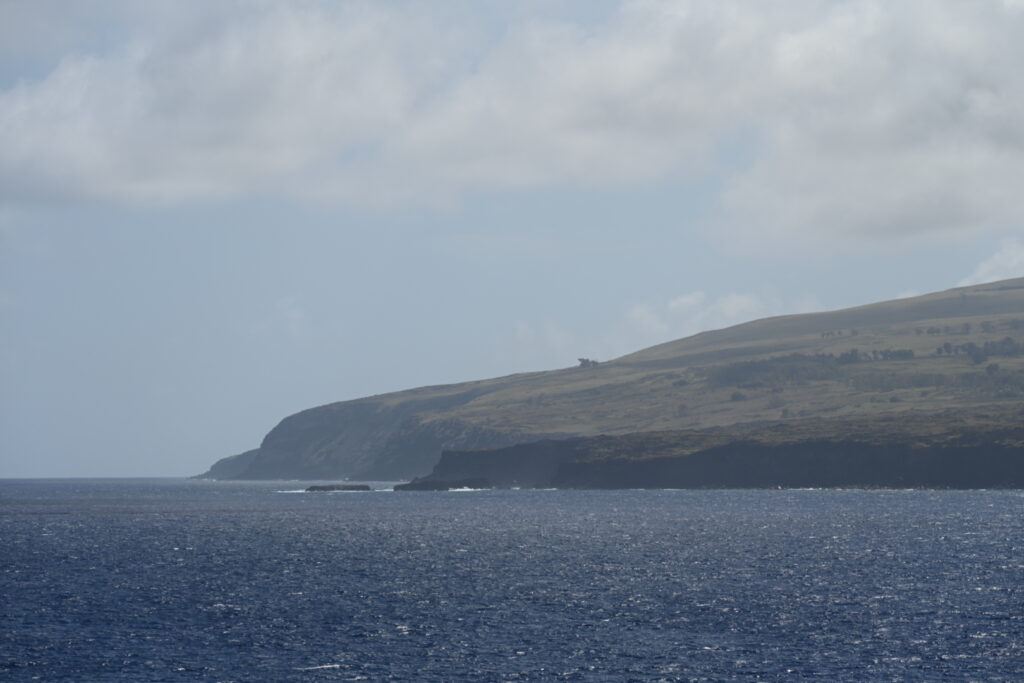
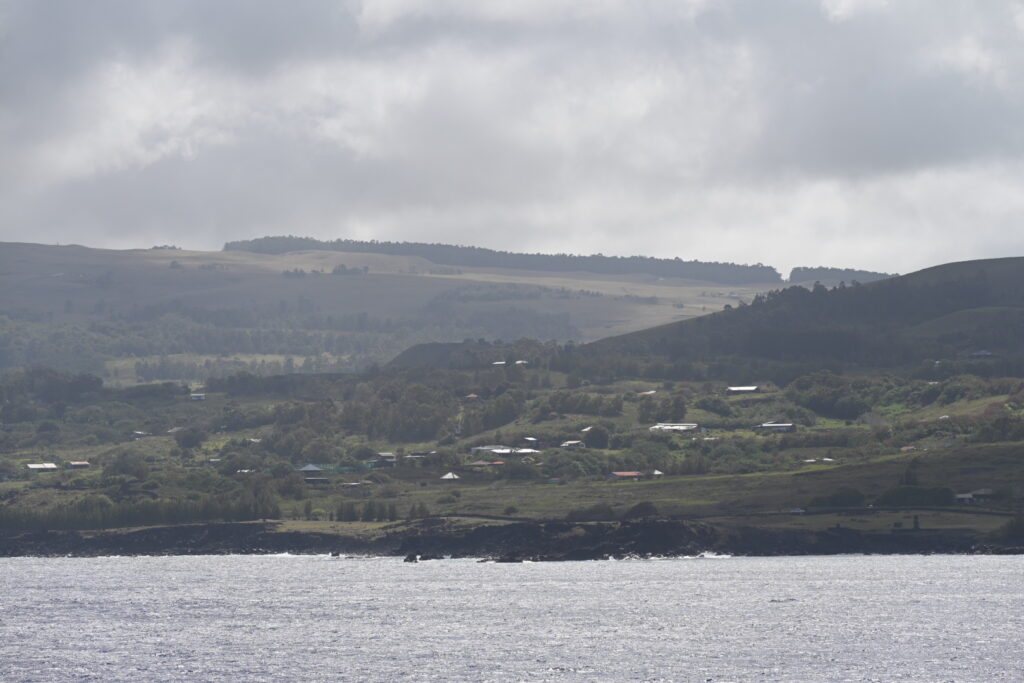
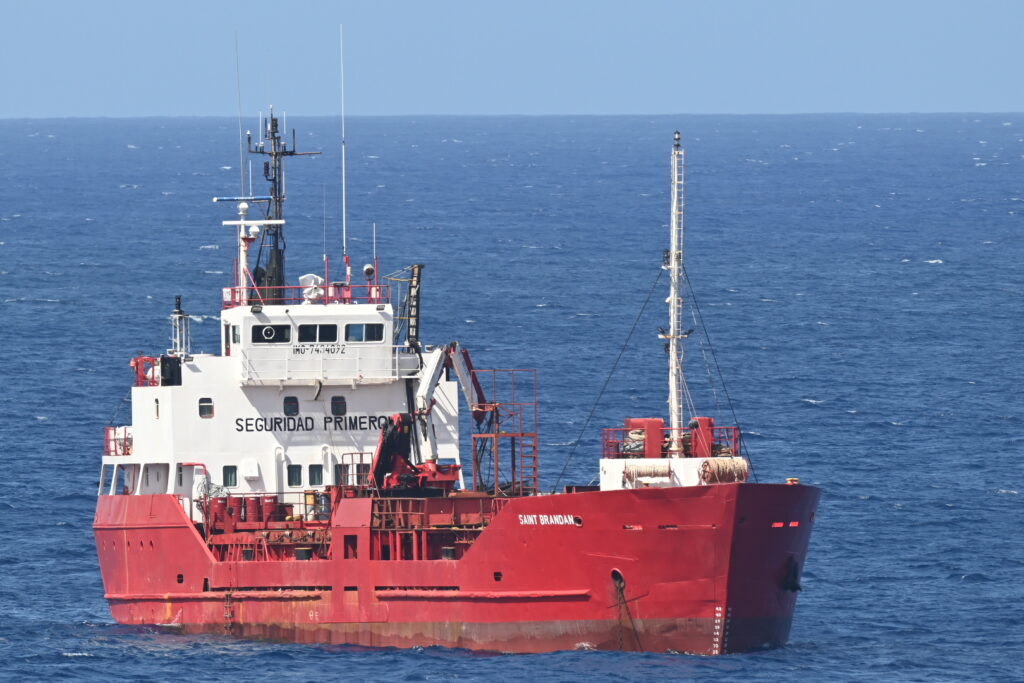
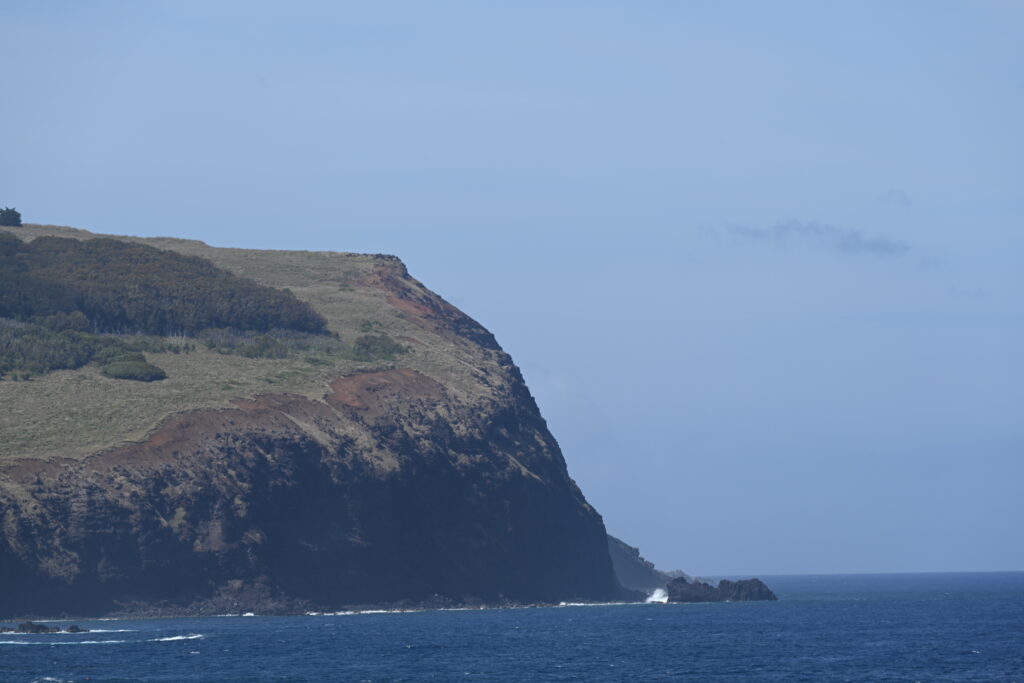
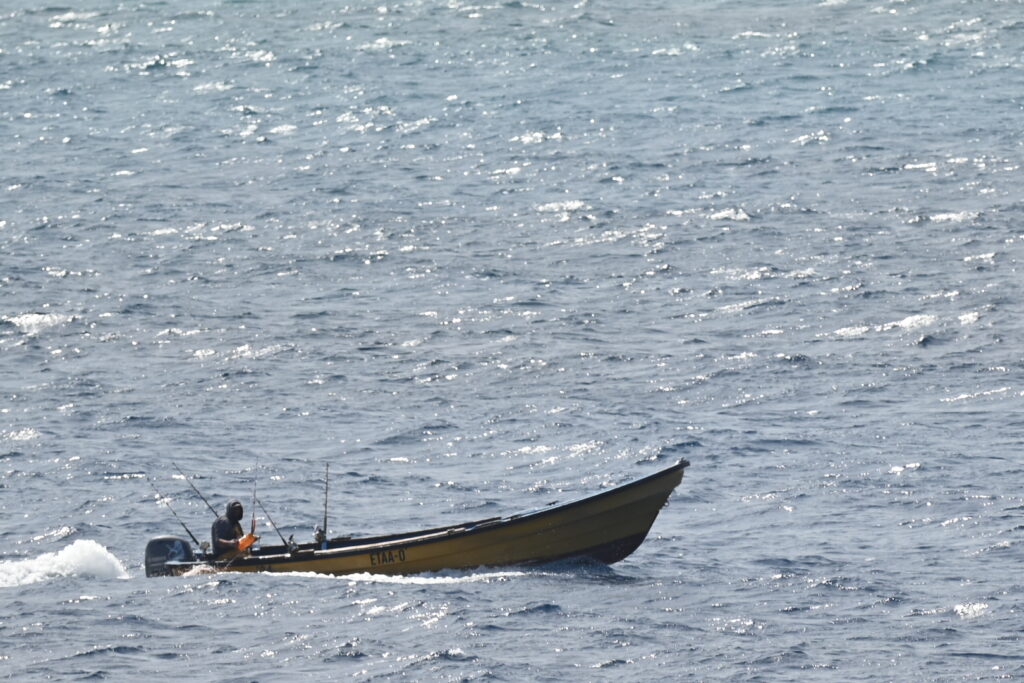
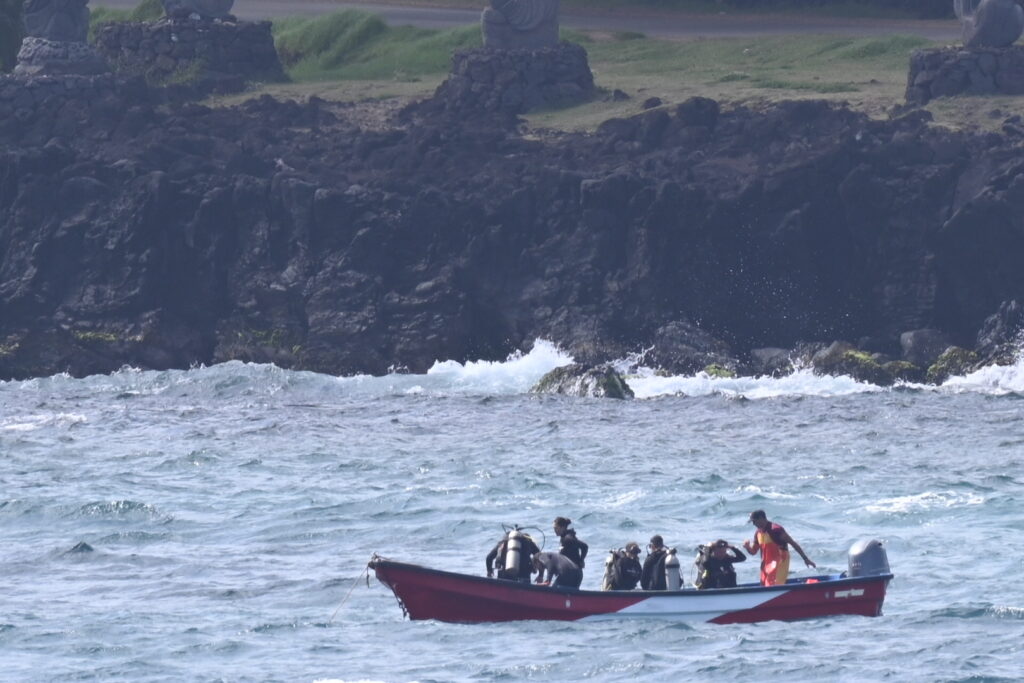
Apparently we’re not the only ones with diving on our mind…
Then back to the rooms in time for Expedition Leader Peter’s announcement – we were running slightly behind in terms of in-clearance to Chile, but we would be able to continue to scout ahead. Expect timings to be pushed back by 15 minutes. Shortly thereafter, he confirmed – conditions are considered operable at Hanga Roa. We’re going to land!
But not quite where we expected – either due to the concentration of busses or due to some other factor, we are instead landing at a dock roughly 1 km south of the centre of Hanga Roa. This is fine today, but may impact tomorrow’s plans to squeeze in a snorkel. Time will tell.
It was a bit rough-and-tumble at the sidegate, with the zodiac moving in a kind of oval-shaped loop around the ladder. But the Able Seamen worked their usual magic, and we all got aboard with a minimum of stumbles and lurches. Nikita brought us in with minimal drama and – though the surf crashed all around us – we arrived with scarcely a splash. (It helped that we were in the larger Mark 6 zodiac instead of the smaller Mark 5.)
Interesting as well that we had Rapa Nui pilots to go along with each of the zodiacs, as well as additional Rapa Nui staff to help with embarkation and debarkation – as well as a local greeter of a different kind, in the former of a bold and persistent sea turtle.
Everything was neatly cued up for us when we arrived – we were directed to the end of a line of busses. Expedition staff and local guides were aboard. We duly filed on, and were shortly on our way.
The transportation won’t be winning any awards for luxury, but it was quite servicable – the air conditioning mostly blew cold, and it managed the potholed roles without too much trouble.
Our first stop was the archaelogical site of Tahai near the city of Hanga Roa – specifically Ahu Ko Te Riku, which is the only ceremonial platform (ahu) in Rapa Nui where you can see a complete moai (the statue) with both eyes and pukao – the statue’s hat or hair. The eyes were only carved and decorated / painted once the moai was installed on its platform. That makes it easy for archaeologists to figure out whether a moai is complete or if it was broken / discarded earlier.
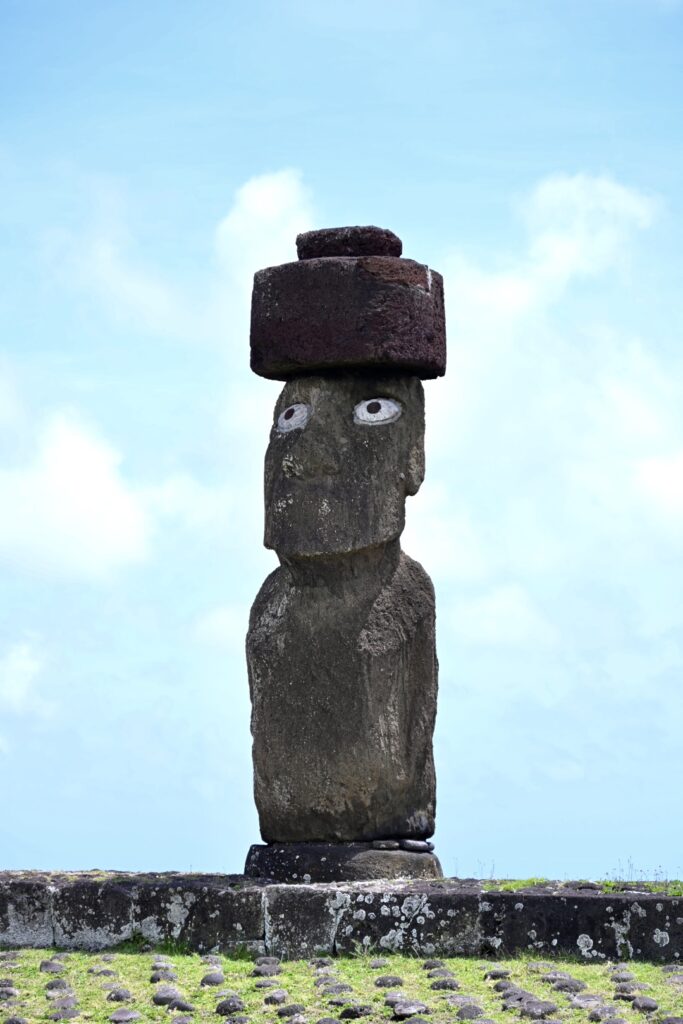
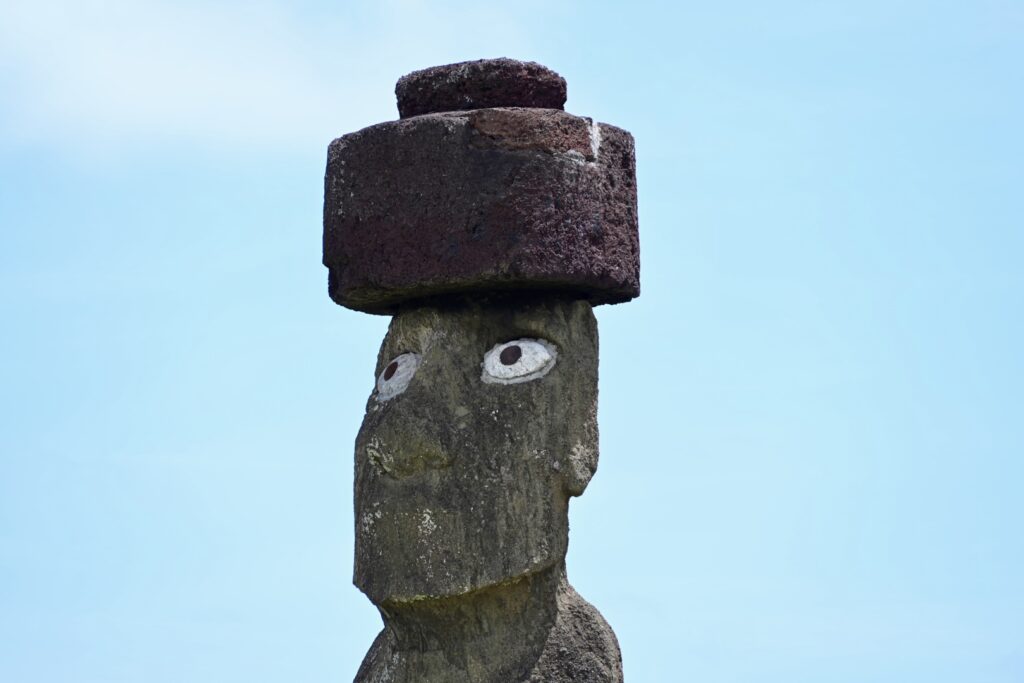
It’s restored – rather than in its original, preserved state – but no less striking as a result.
It sits beside Ahu Tahai:
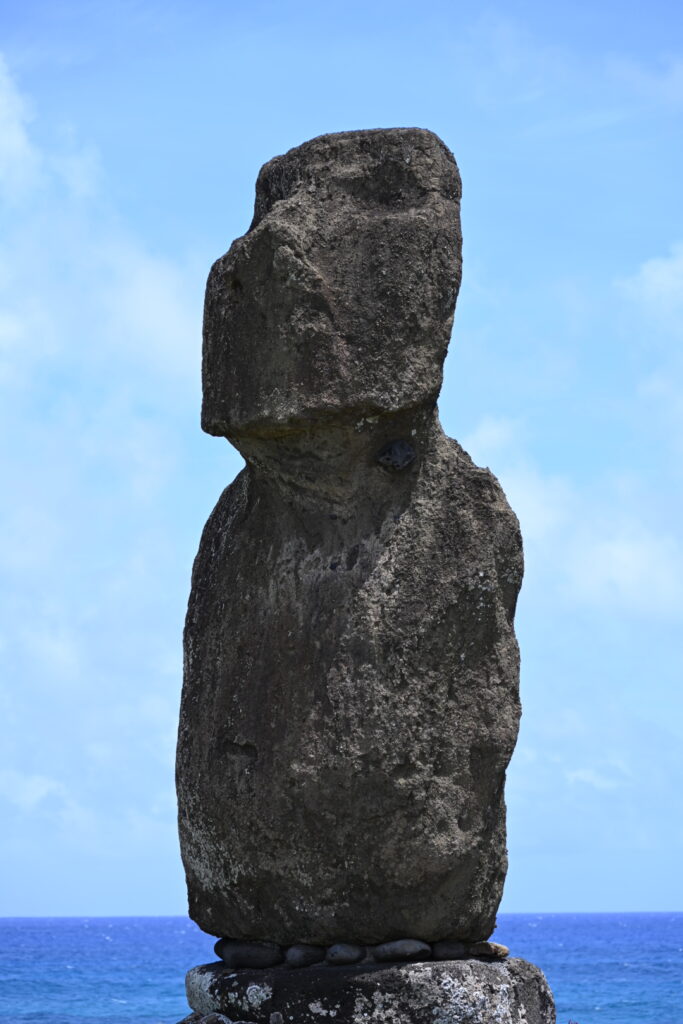
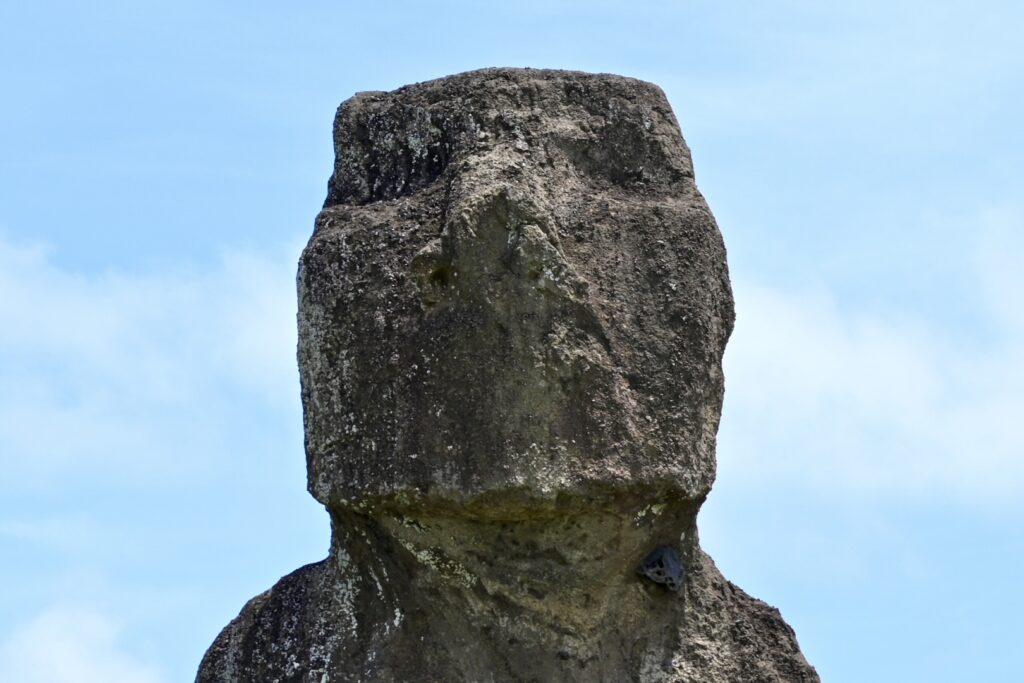
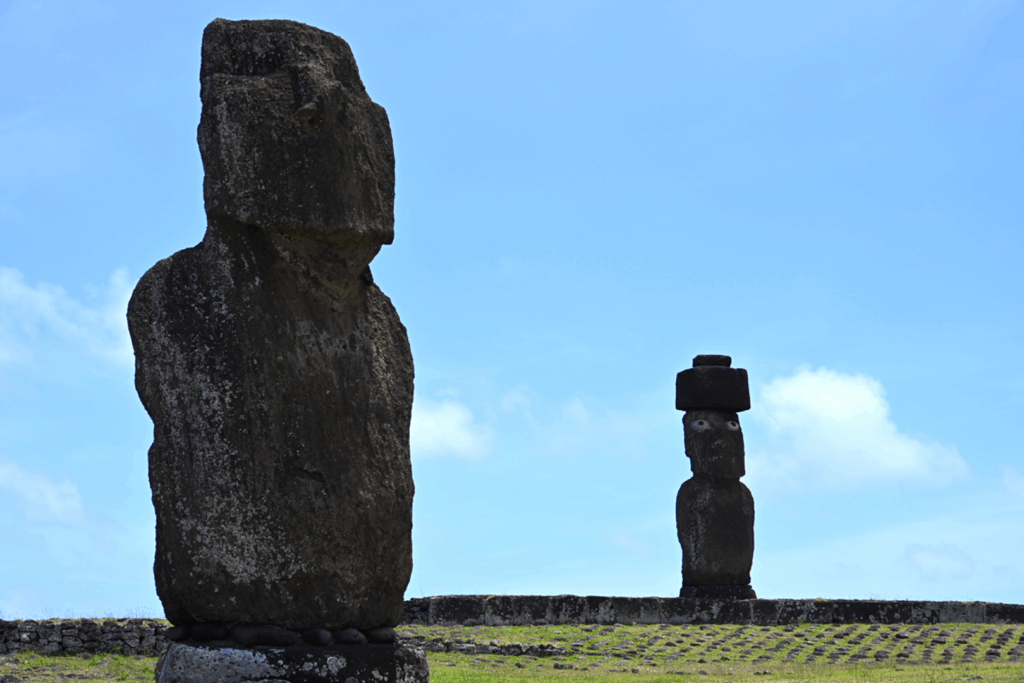
And beside that – with five moai – is Ahu Vai Uri:
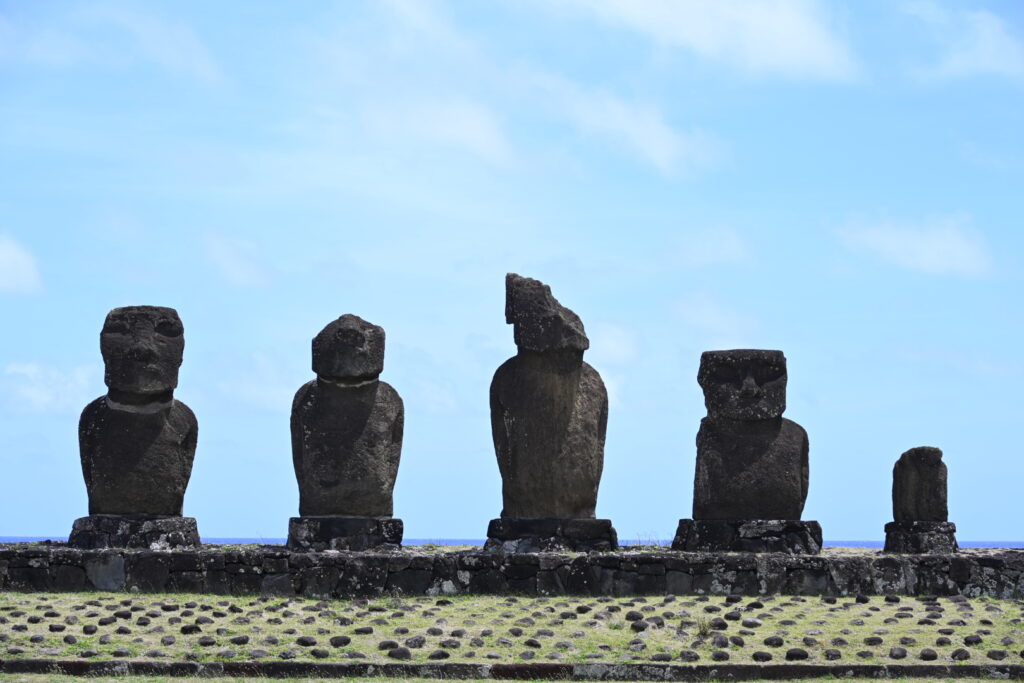
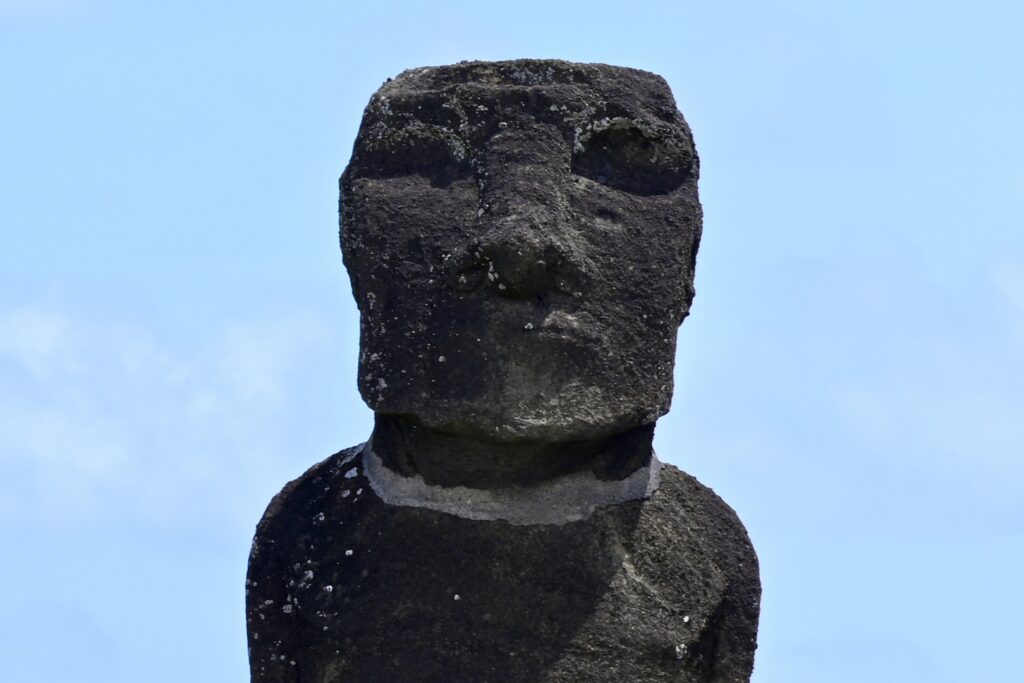
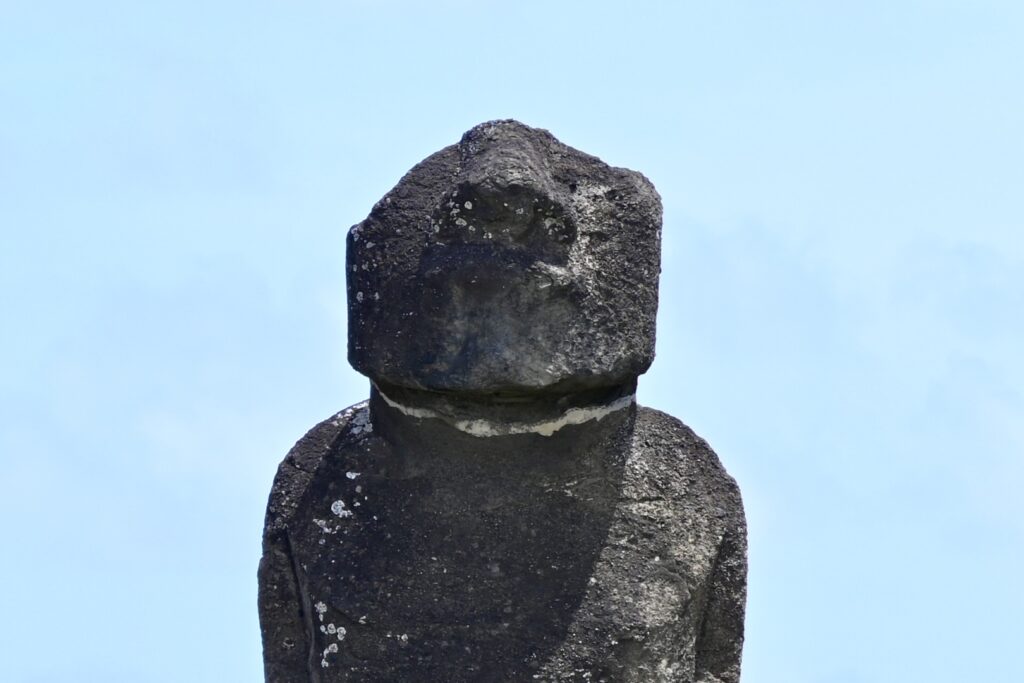
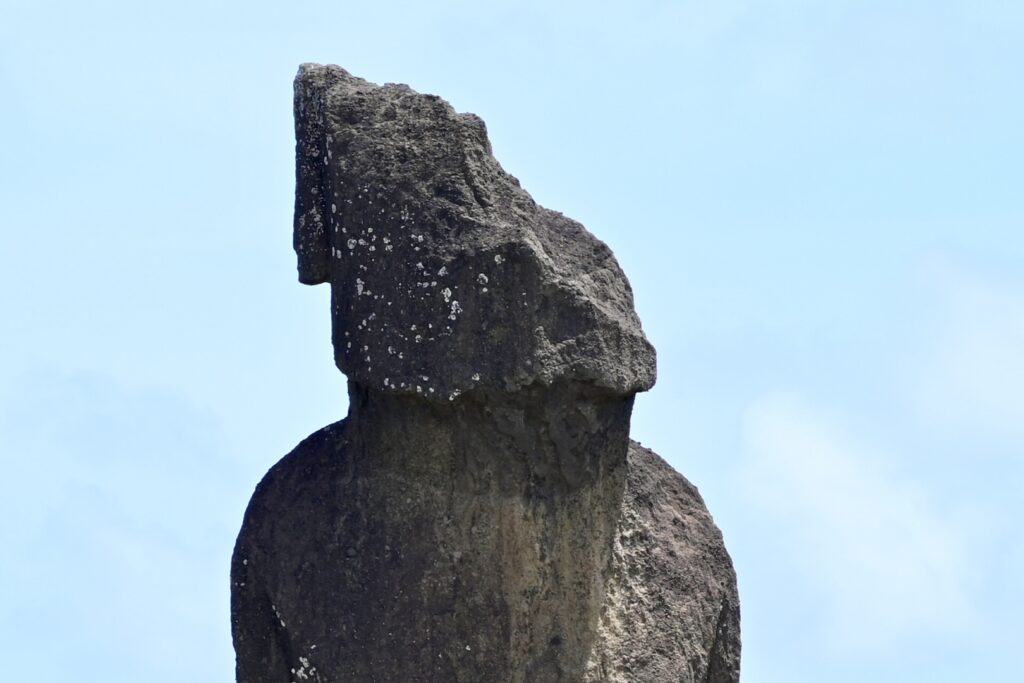
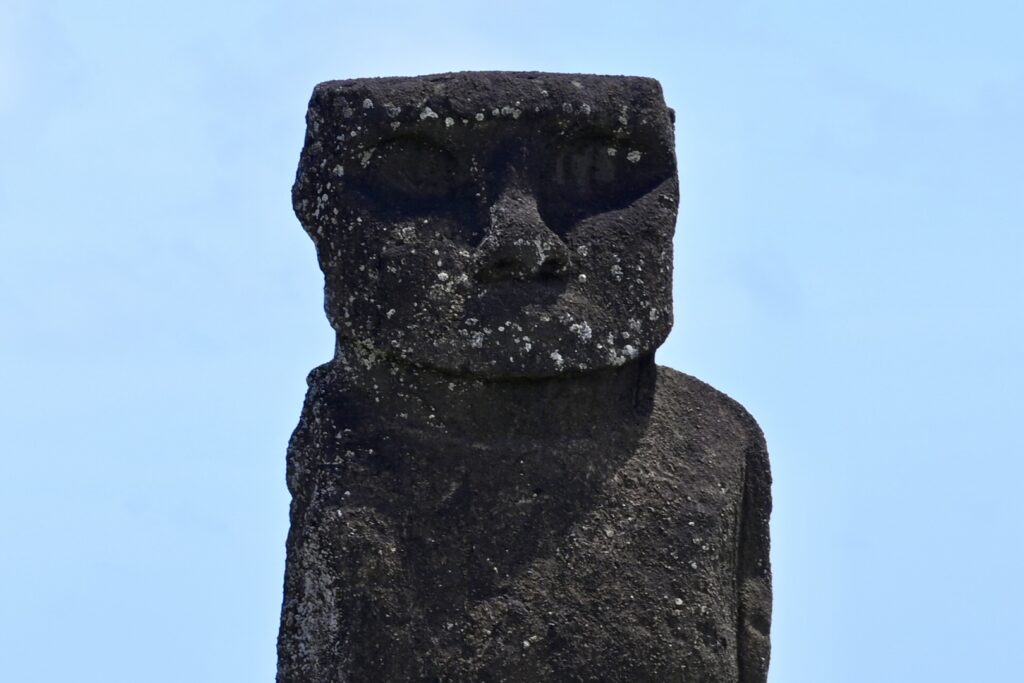
There are stone walls which mark the areas beyond which visitors are unable to pass. We were glad to see these boundaries being enforced by the guides and respected by the travellers.
There was also a replica of one of their housing structures:
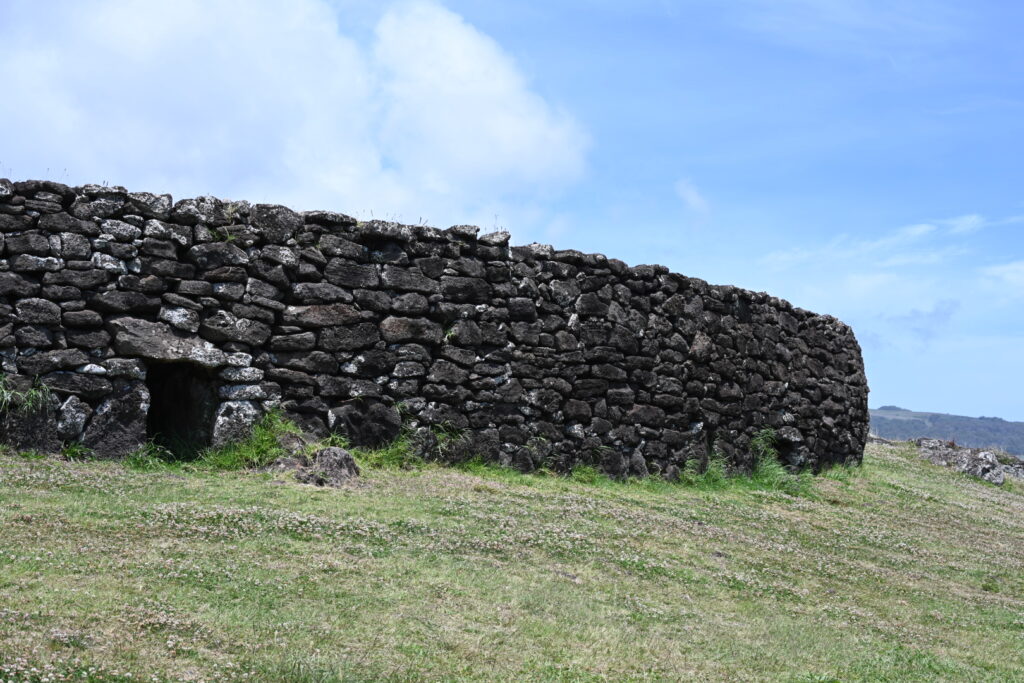
More on this tomorrow when we visit the village of Orango, which contains the original birdman cult structures.
Then back on the bus for a drive through wild Rapa Nui:
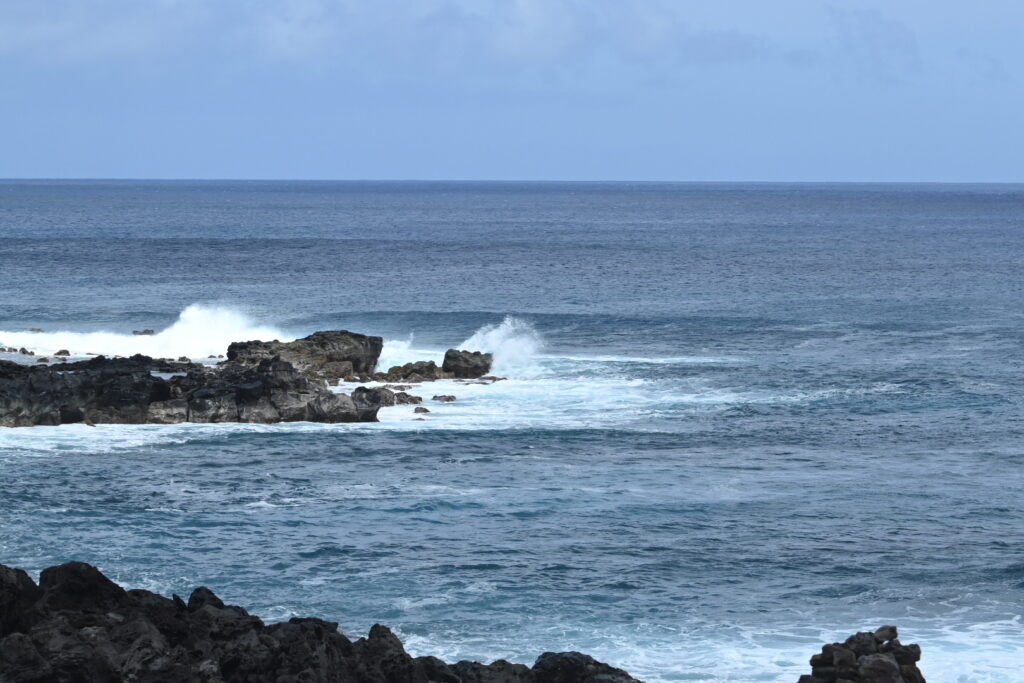
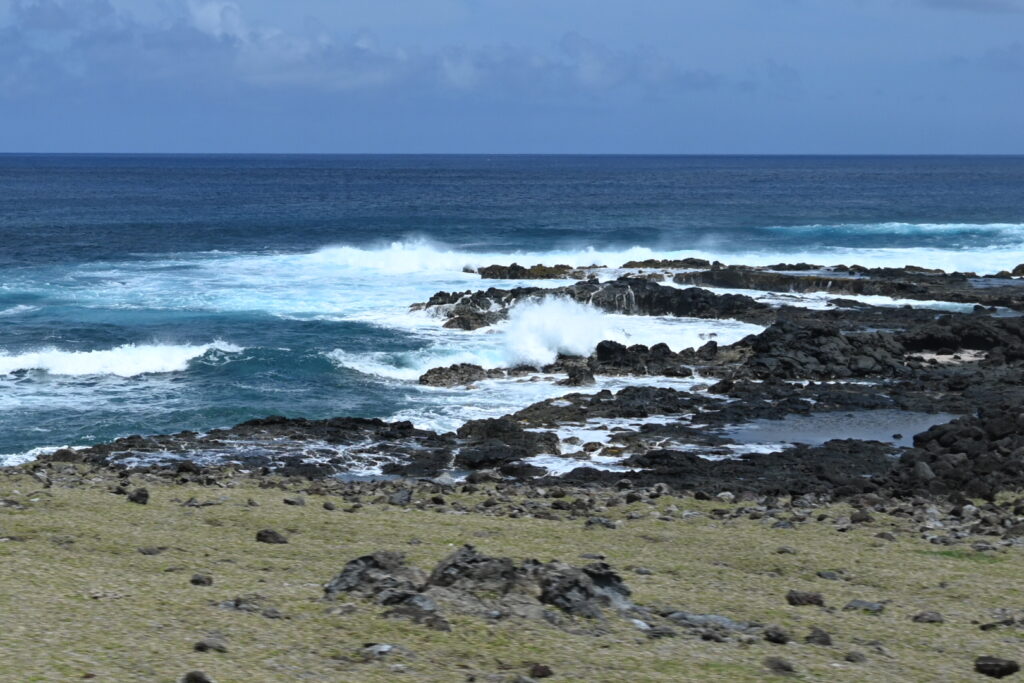
And a visit from some of the local cats during a pit stop:
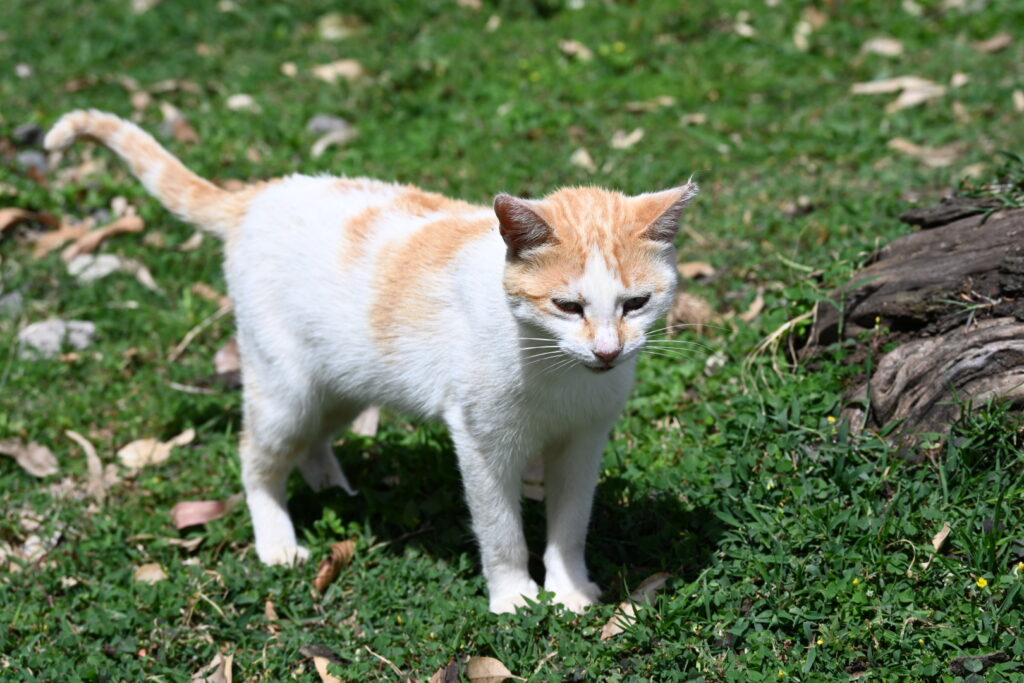
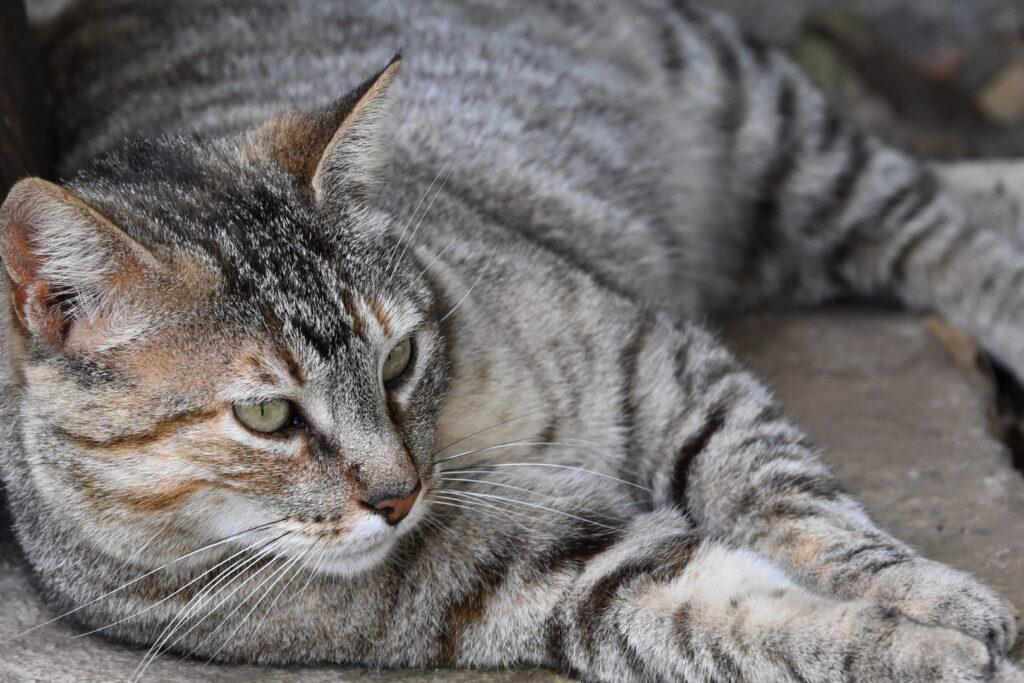
Then on to Rano Raraku, which is the quarry where the moai were carved for roughly 500 years. Mind you the actual timeframe of the moai carvings is much disputed. It’s currently thought to have started around 1100 AD and finished around 1600 AD, but it depends which archaeologist you talk to.
We passed a horse along the way:
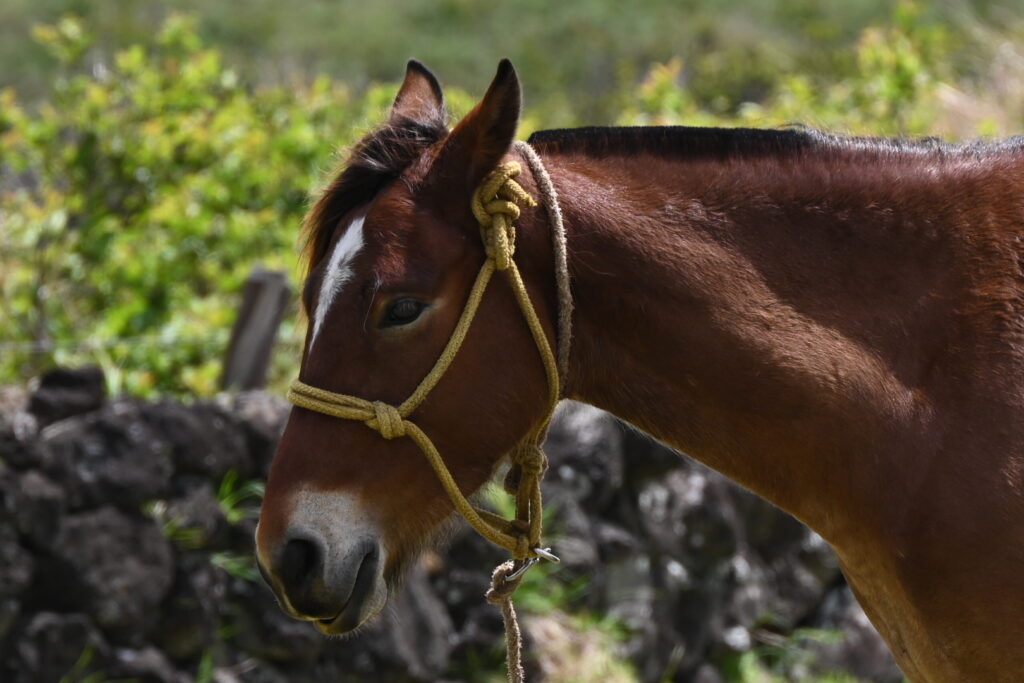
Rano Raraku is an absolutely stunning site:
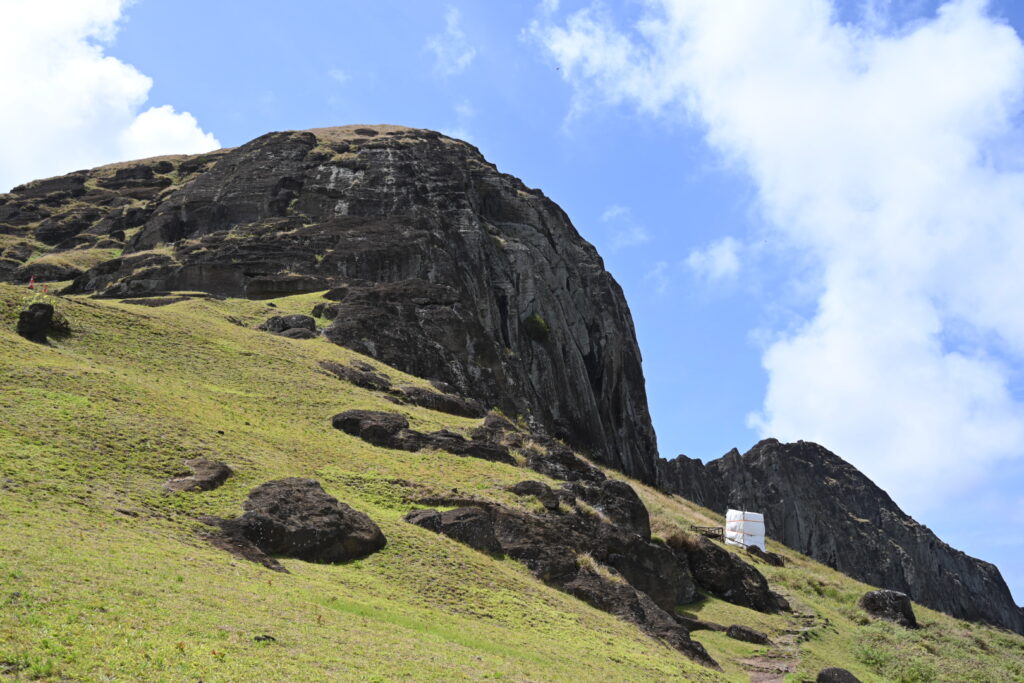
Though despite my best efforts to crop people out, it is a very busy location. The inside area with the lagoon is currently closed to give the currently-dry lagoon a chance to recover, and we did not unfortunately have tickets that would allow us to scale higher up the cliff.
However, this was such a whirlwind trip that I’m not sure we would have had time to do so. We learned early into this visit that two days is not nearly enough, and that we’ll have to plan a return trip if we ever hope to scratch the surface of this remote and fascinating place.
For anyone looking to explore here we would strongly recommend a minimum of 5 days and 7 to 10 would be much better if you want to include snorkel, diving, star-gazing or horseback riding excursions – or if you want to spread out the itinerary.
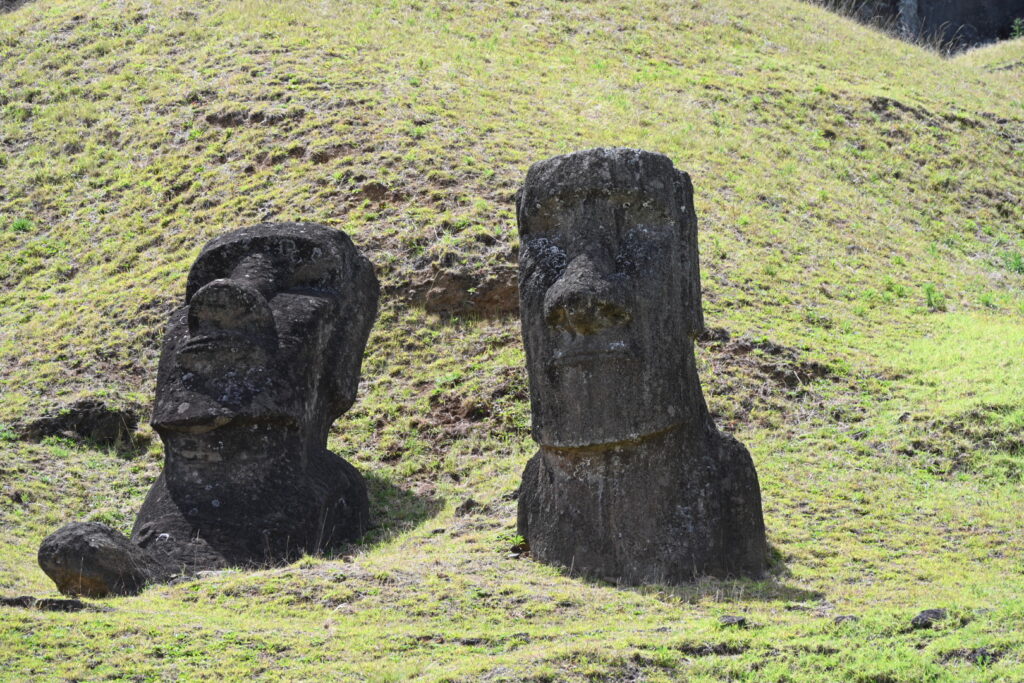
While the moai’s heads have formed the iconic view of the sculptures, these are actually almost complete statues that have been buried due to erosion on the hillside. Excavations have been done to confirm to check out their lower portions but were promptly recovered to prevent further weathering and protect the carvings on the lower body.
The largest statue – Te Tokanga (“the giant”), still in situ – is roughly 22 metres in height!
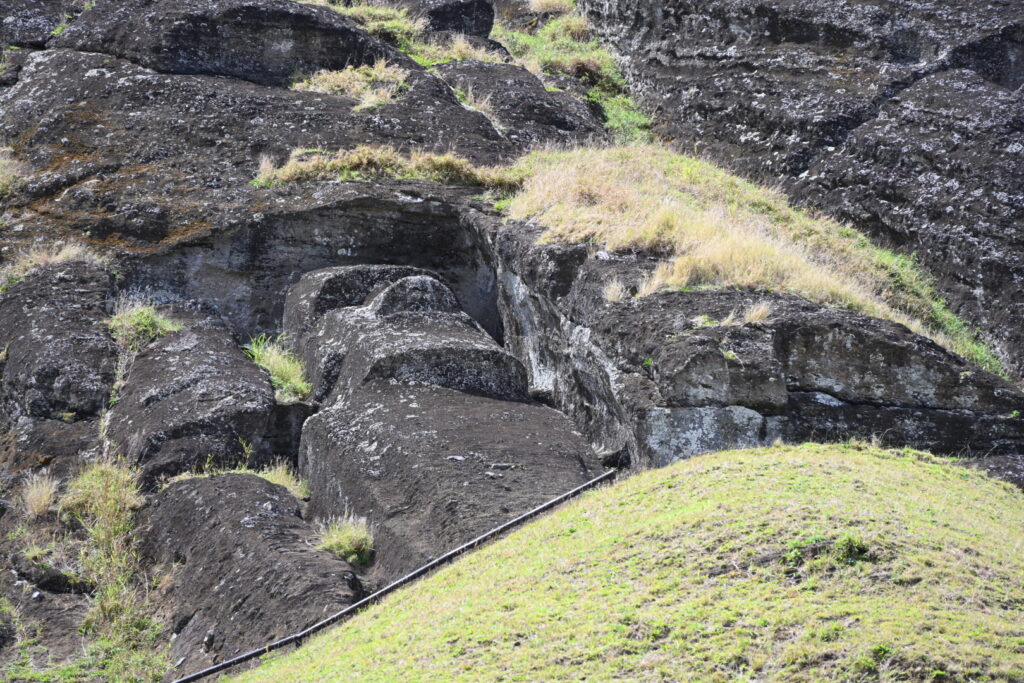
There are competing theories as to why the people of Rapa Nui experienced such a precipitious decline – including a little ice age that started in 1455 with the eruption of two volcanos in Chile and lasted for 155 years, dramatically changing the climate by making it colder and drier. Deforestation and internal conflict likely also played a role – and it’s likely that the introduction of European diseases were a significant and irreversible factor.
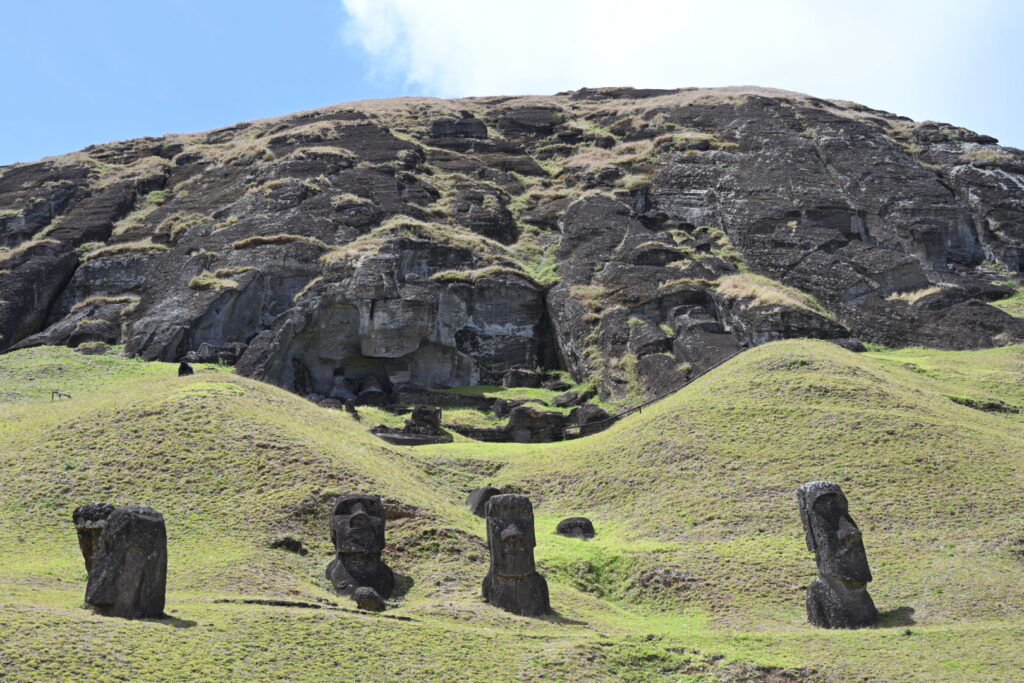
We had a total of 45 minutes to walk down the length of the path and return again. We were asked not to get ahead of our guide, but once we made it to the end of the trail we were largely able to walk back on our own, taking photos as we went. Not everyone was great about sharing the narrow trail, but we muddled through without major incident.
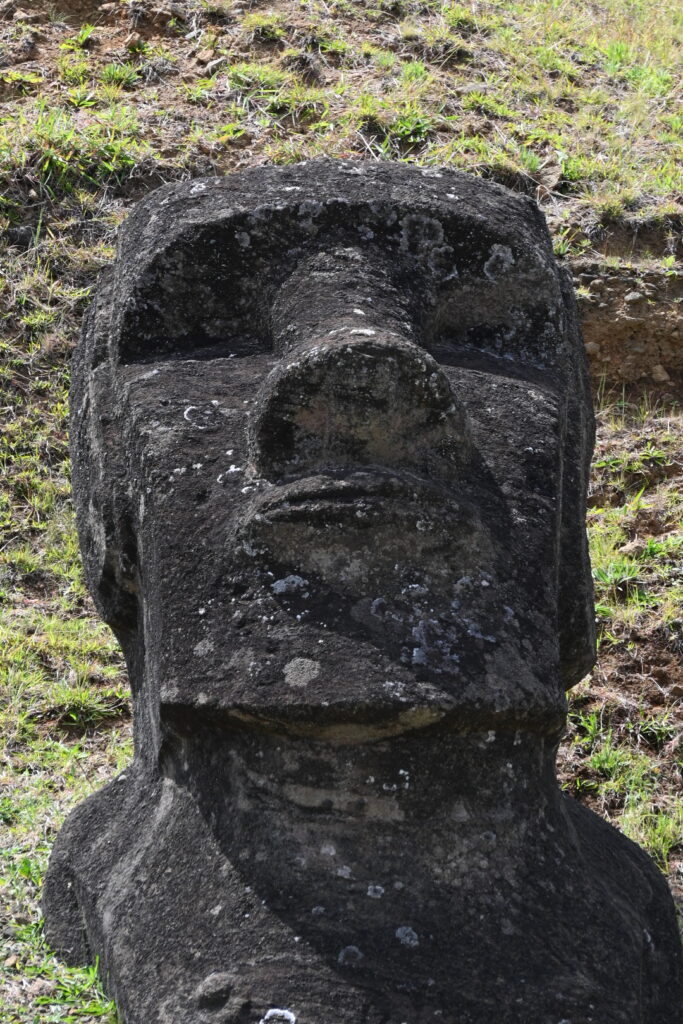
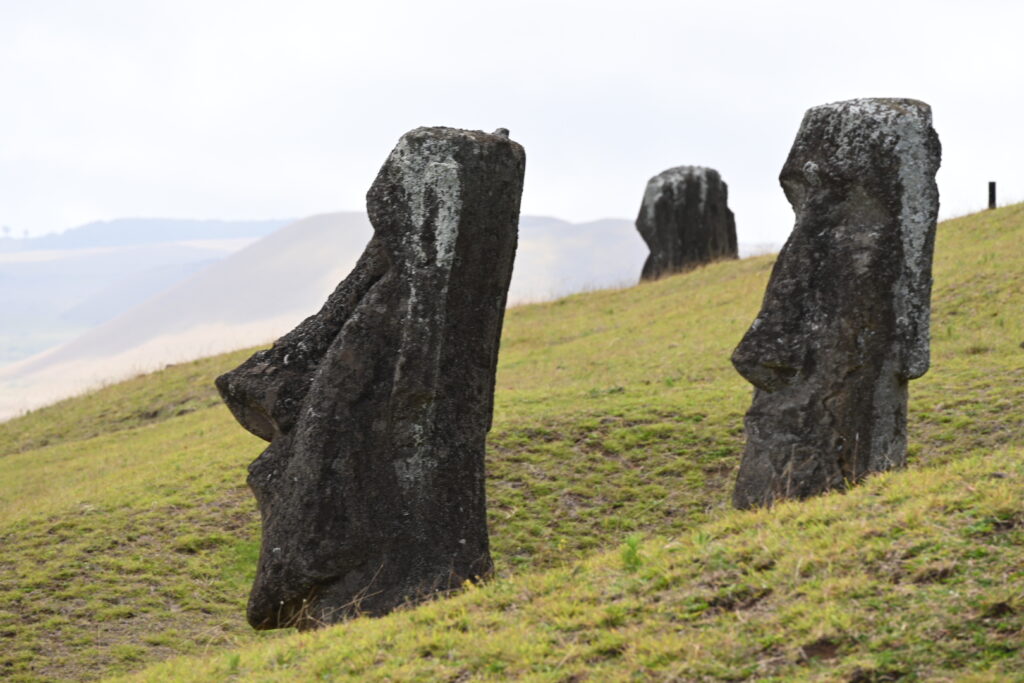
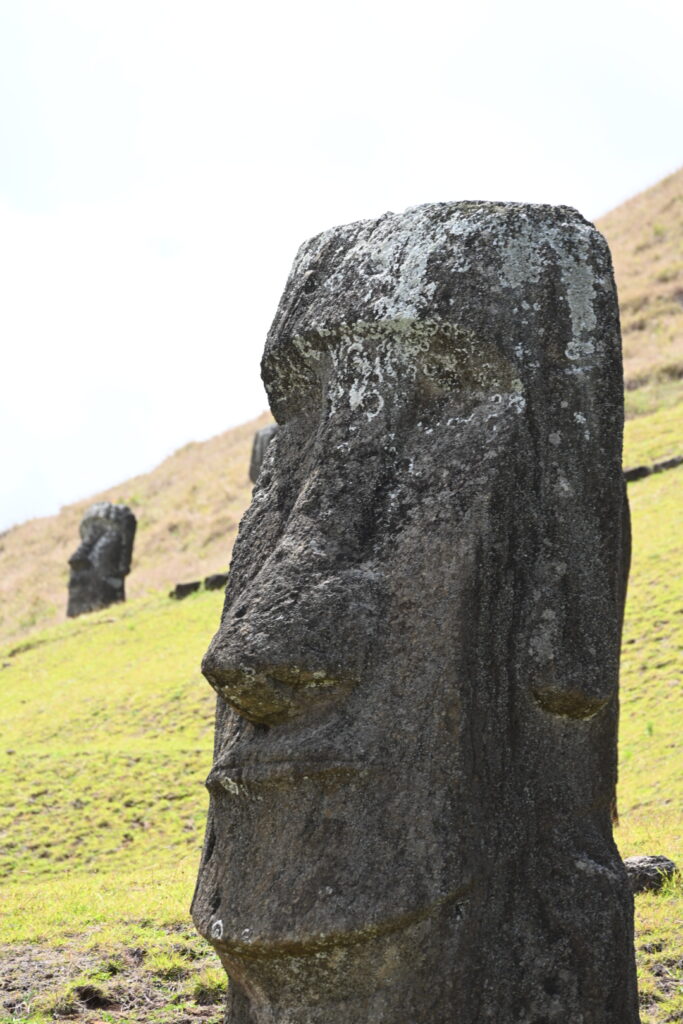
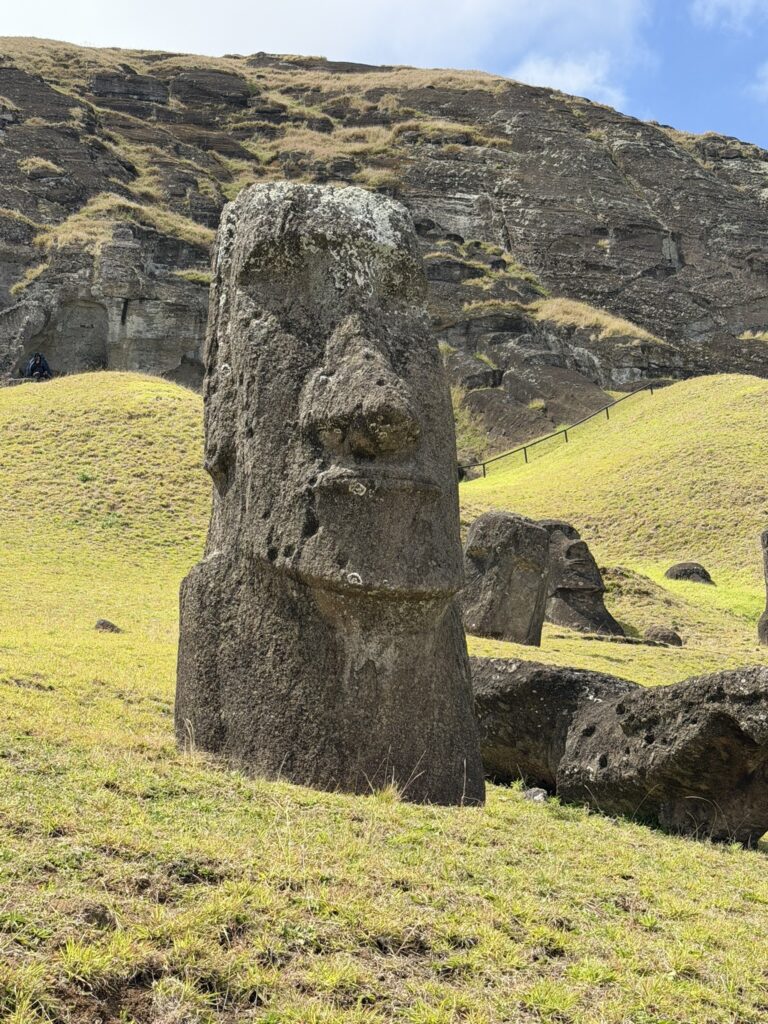
My wife picked up an iPhone 17 just before this trip, and I’m having difficulties telling the difference between its photos and the ones I take with my Nikon.
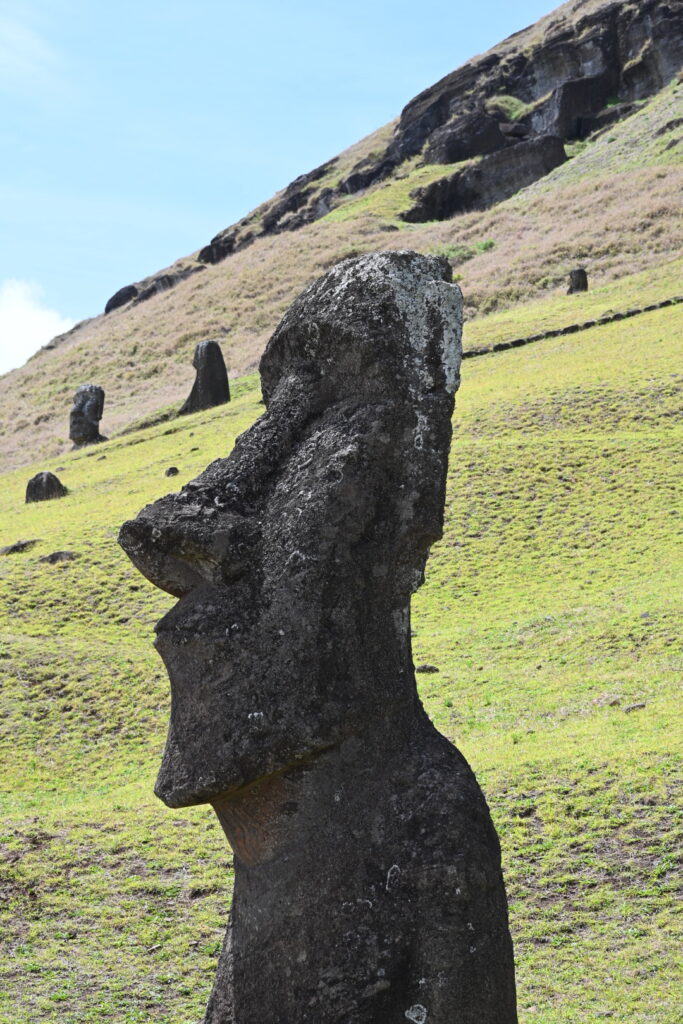
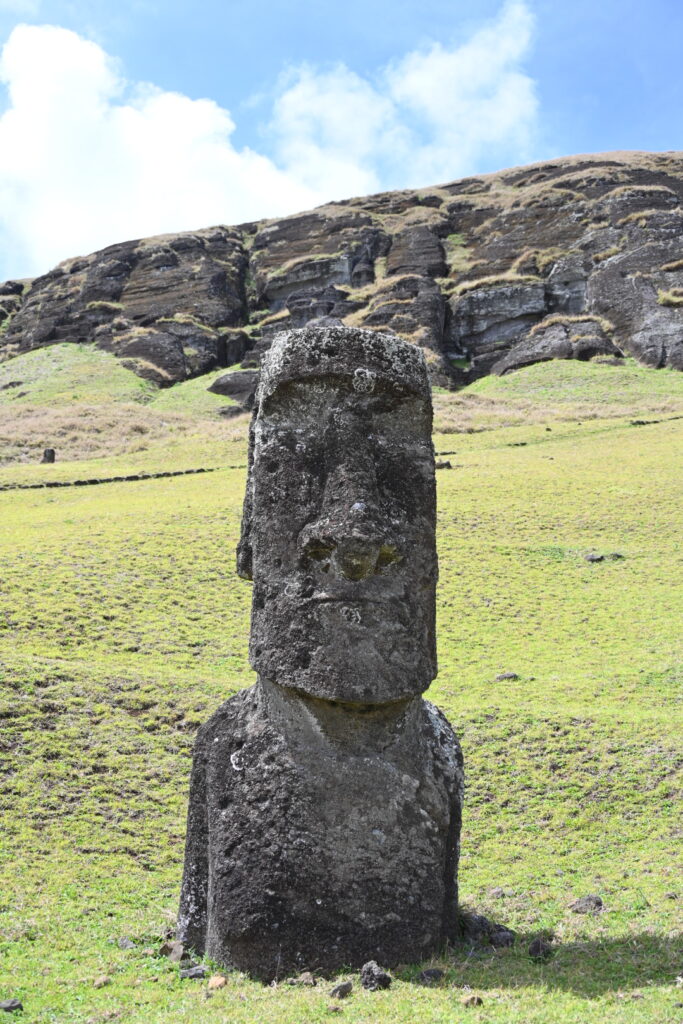
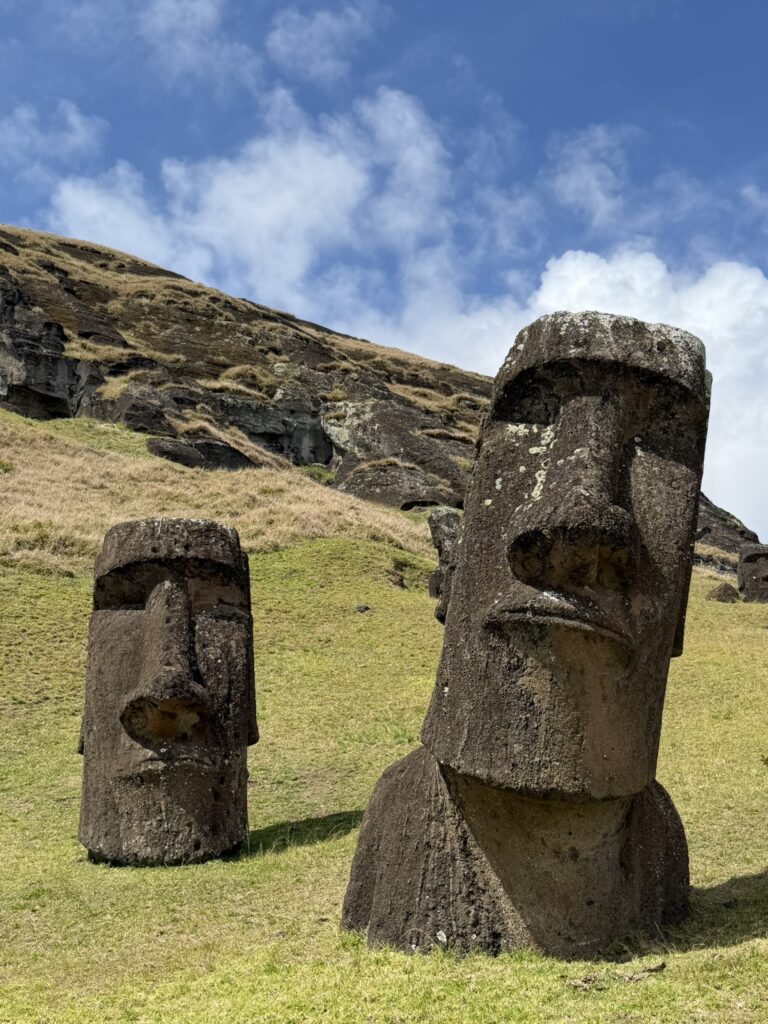
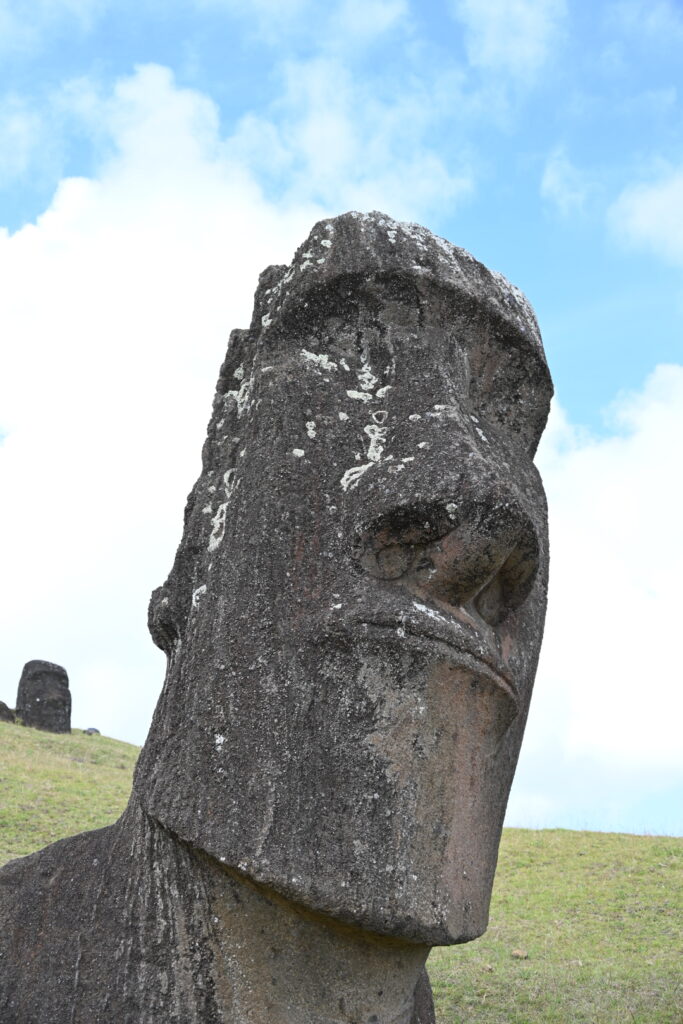
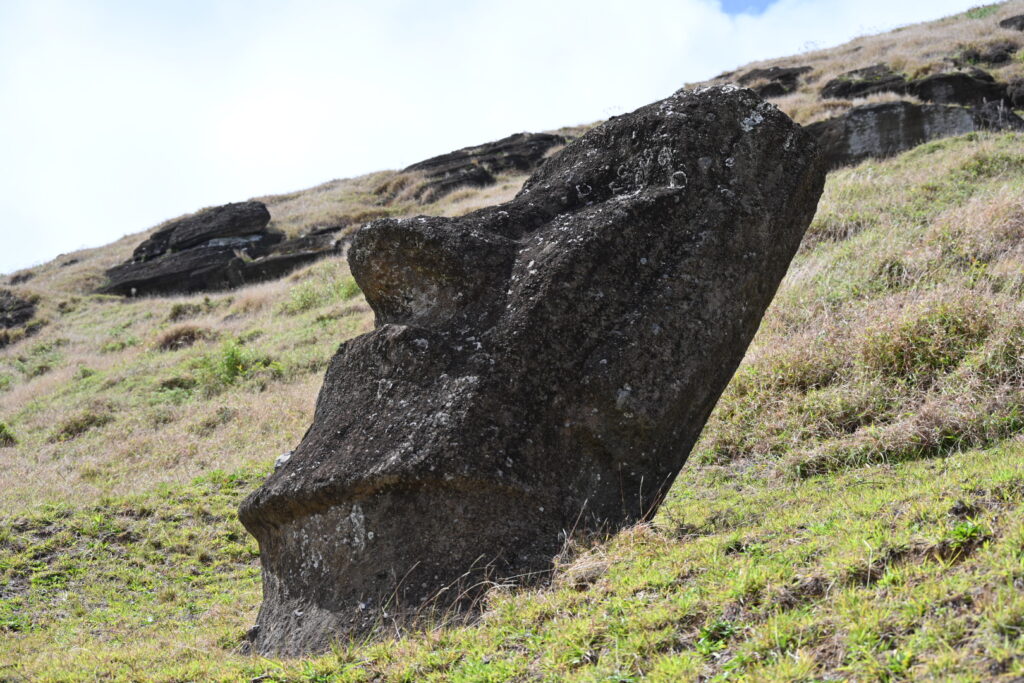
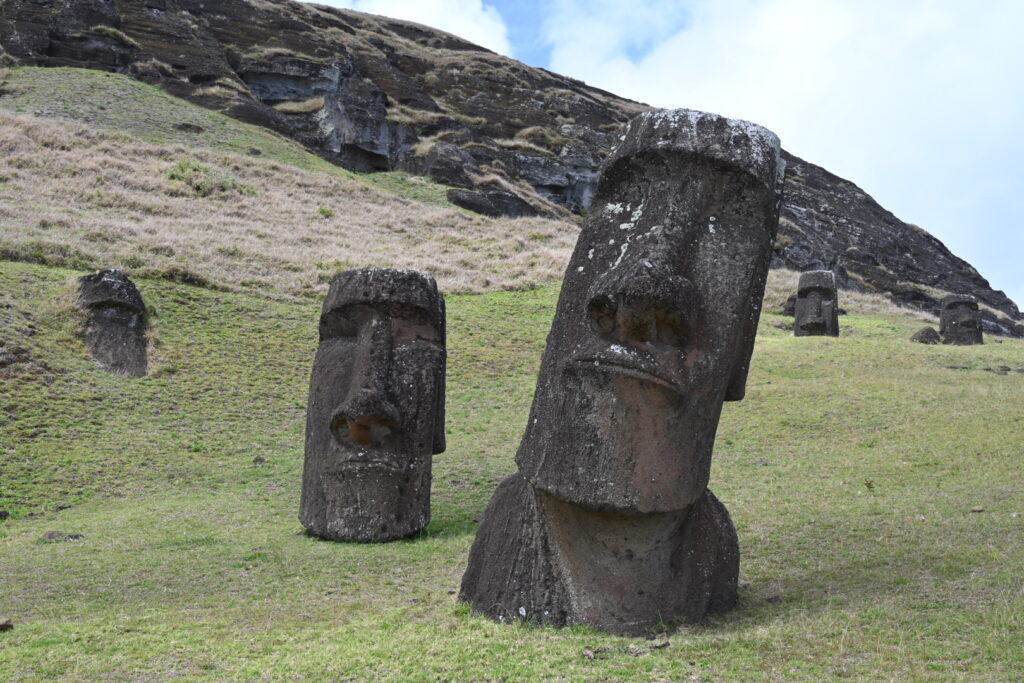
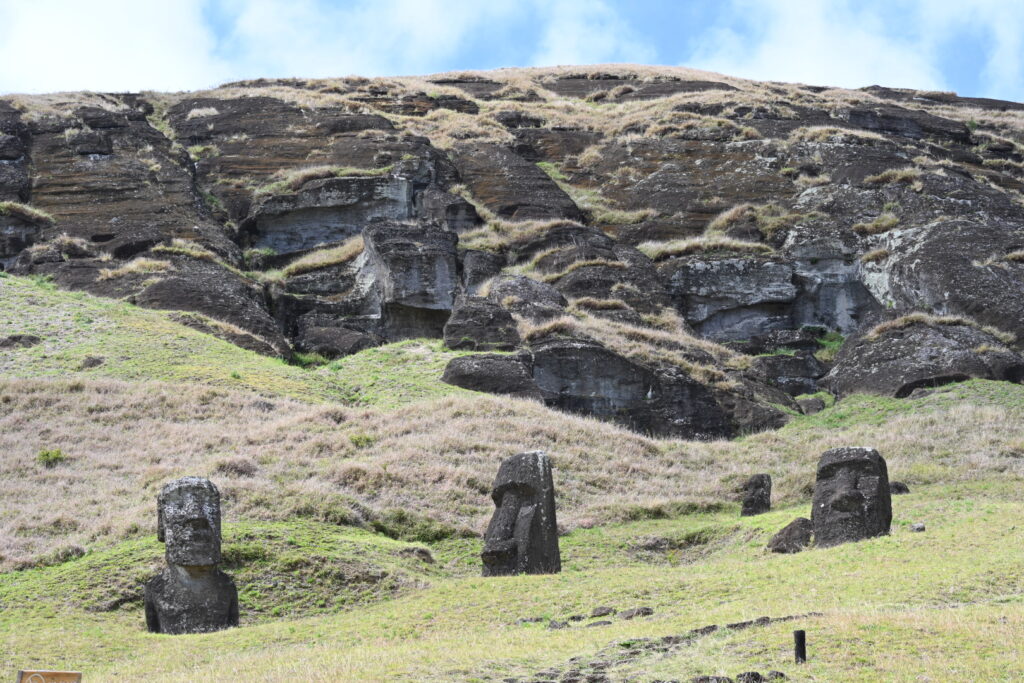
I’m going to stop posting photos of moai. I promise.
(Okay, maybe just another few.)
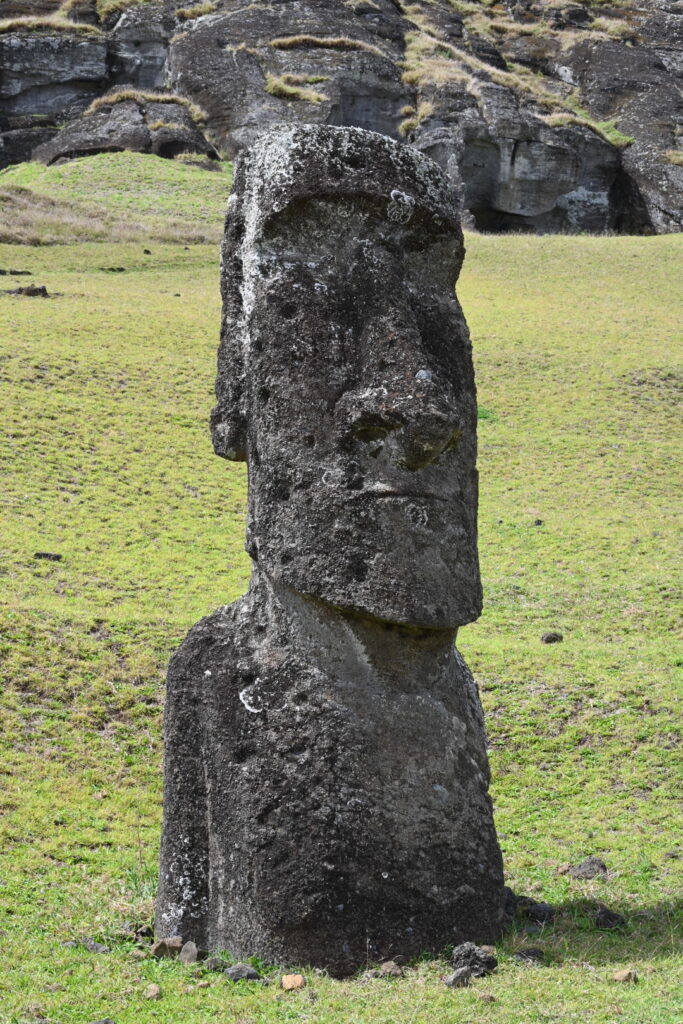
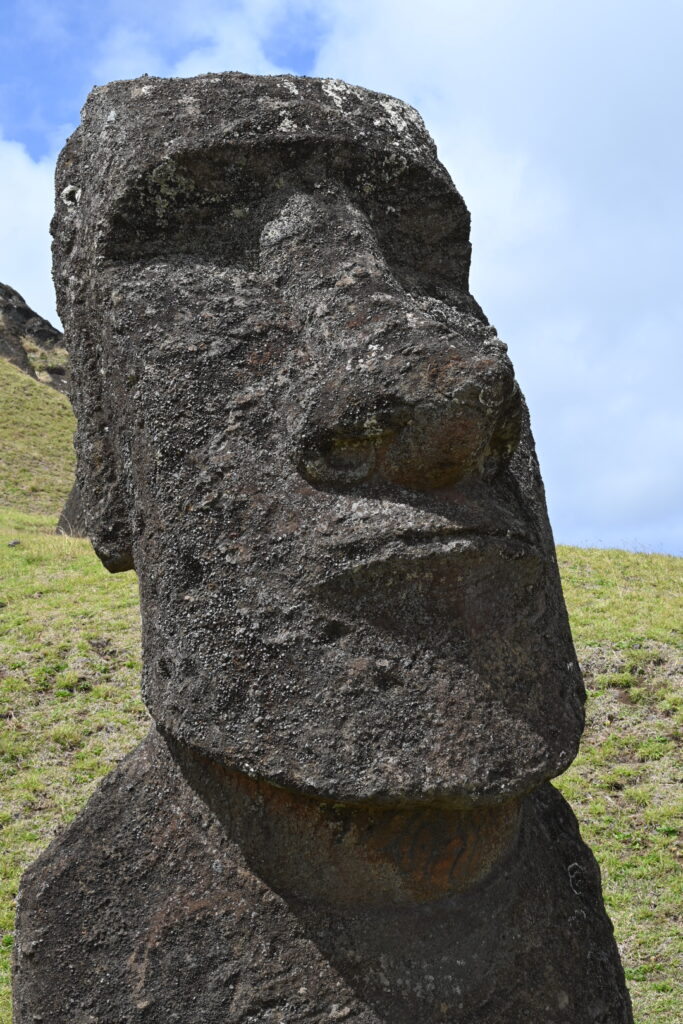
We also spotted a chimango caracara while exploring:
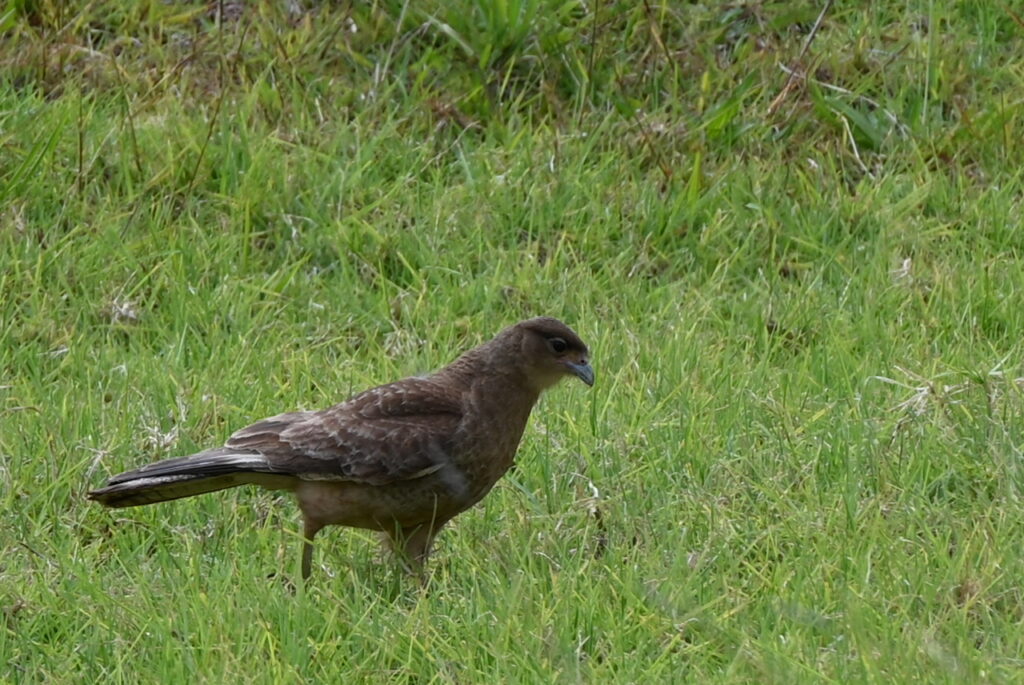
And there was a spectacular view of our third site, Ahu Tongariki:
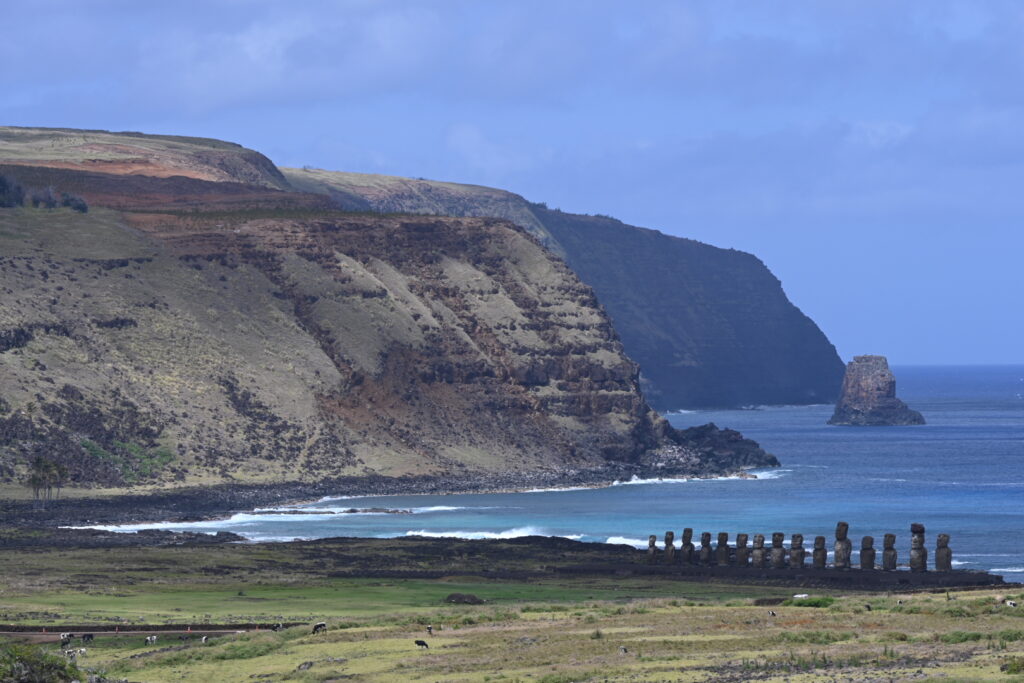
One last glimpse back at the quarry before we left:
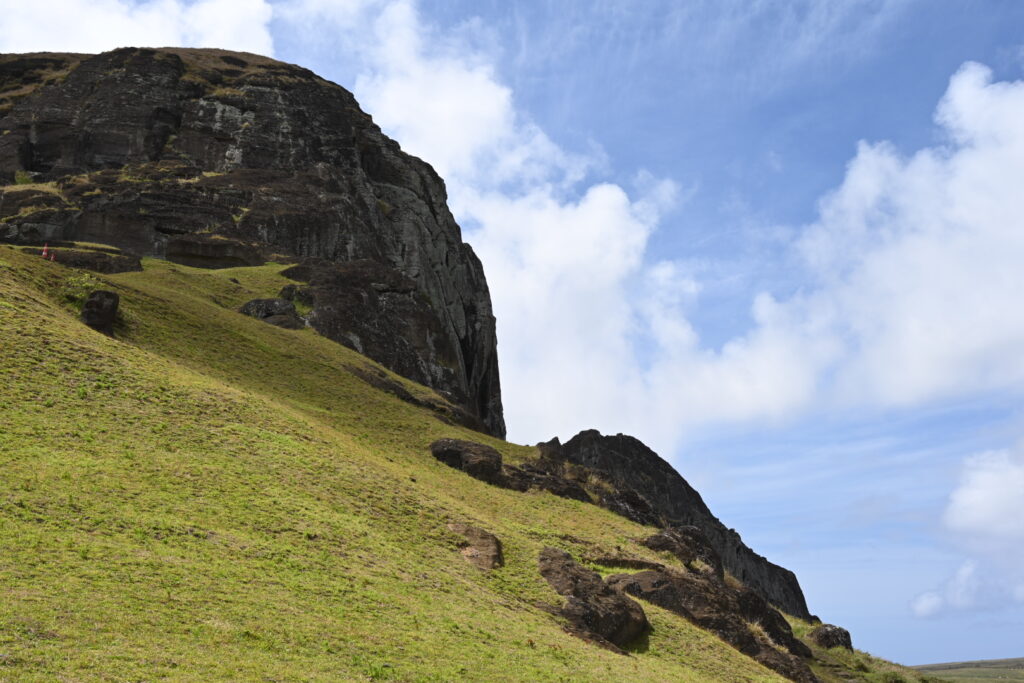
And then we’re on to our next destination.
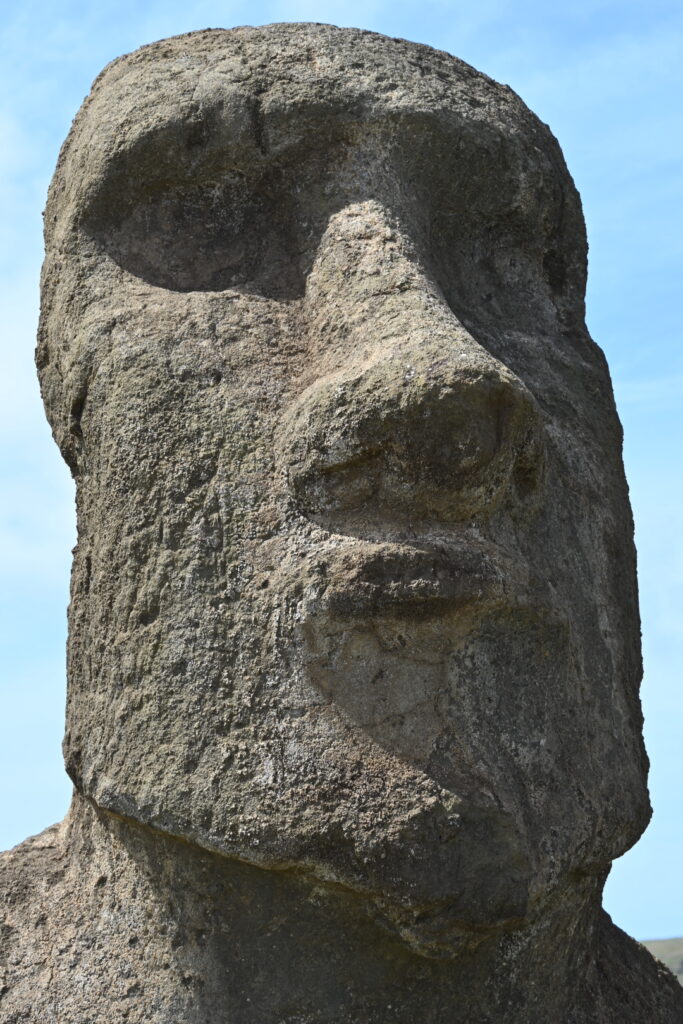
Ahu Tongariki is the largest ahu on Rapa Nui. Its statues were toppled during the island’s internal conflict, and then swept inland in 1968 during a major tsunami. It has since been restored partly with help from Japan, which provided a crane. They are positioned so as to face sunset during the winter solstice.
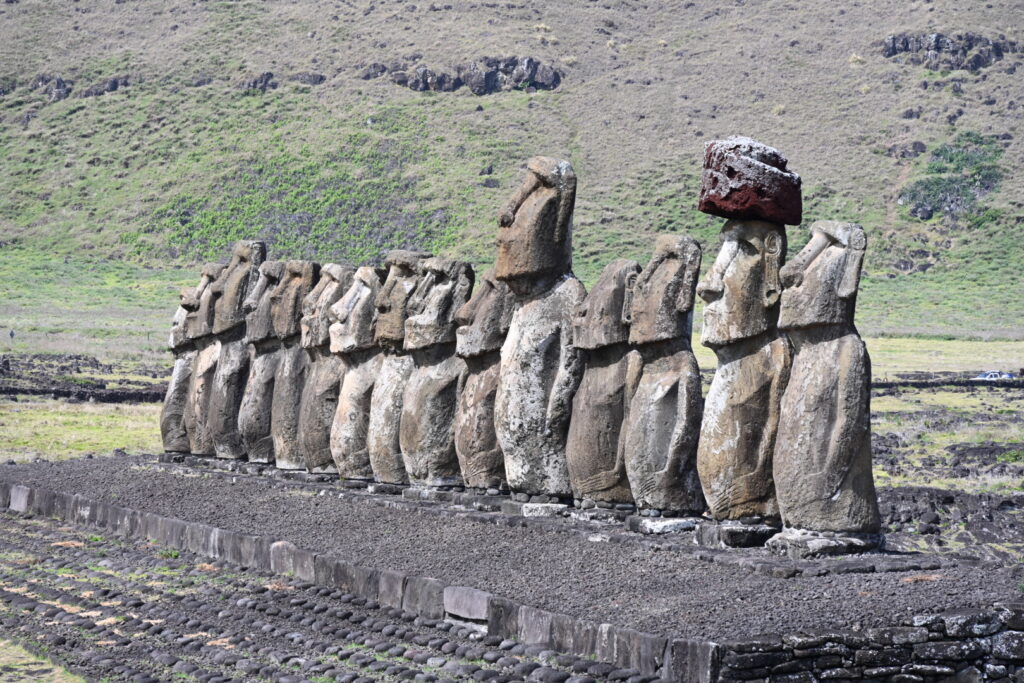
The pukao (hats or hair or ceremonial headdresses which is hotly debated) are located in the same area, but have not been positioned atop the statues as they are unsure which pukao belongs to which statue – apart from one.
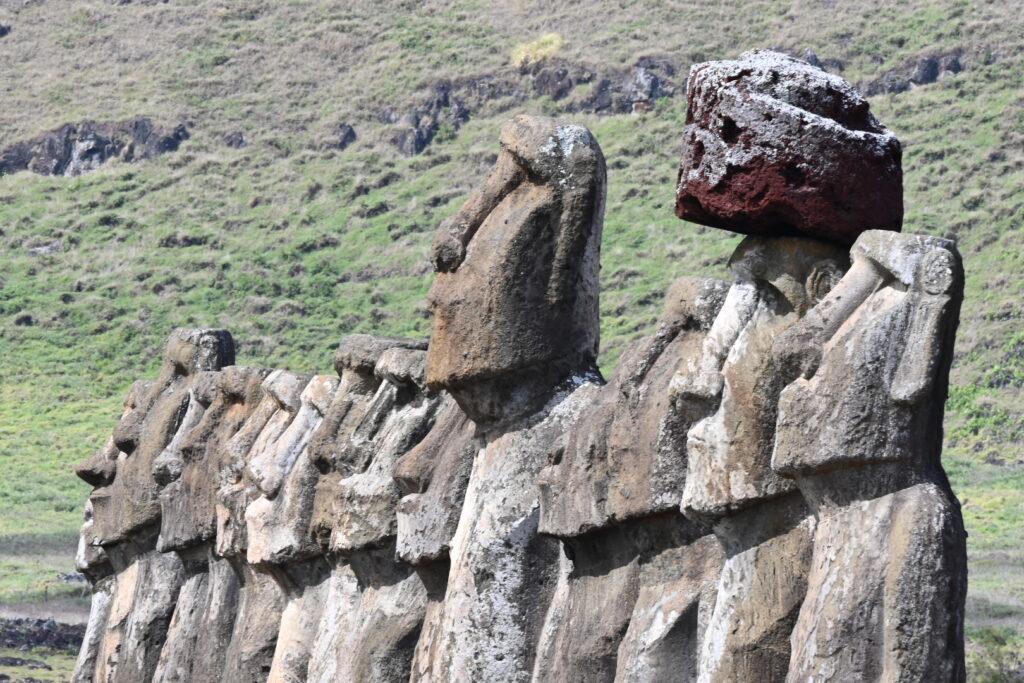
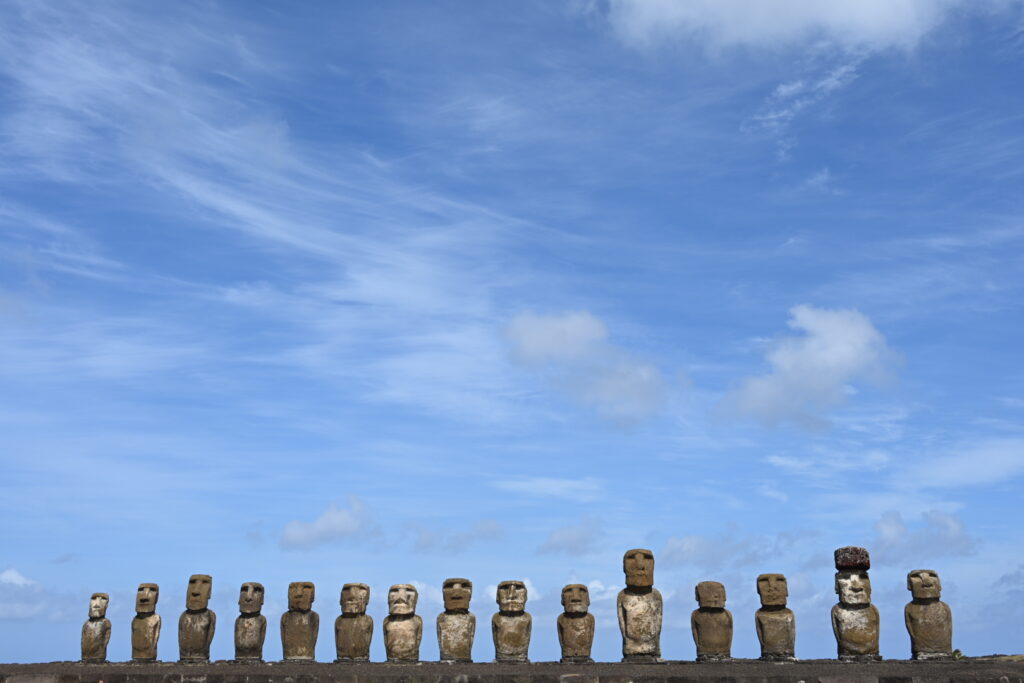
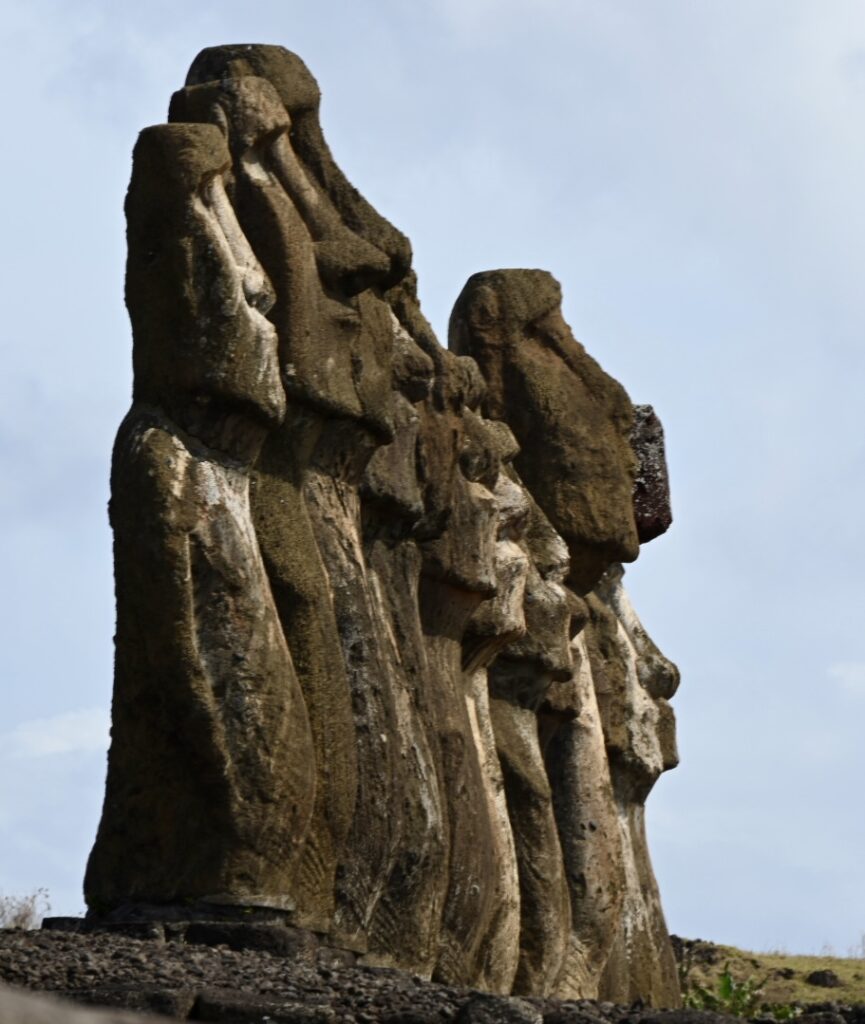
Some of the detailing on the back is still visible, but not as much as at other sites. Still, worth taking the full circular path.
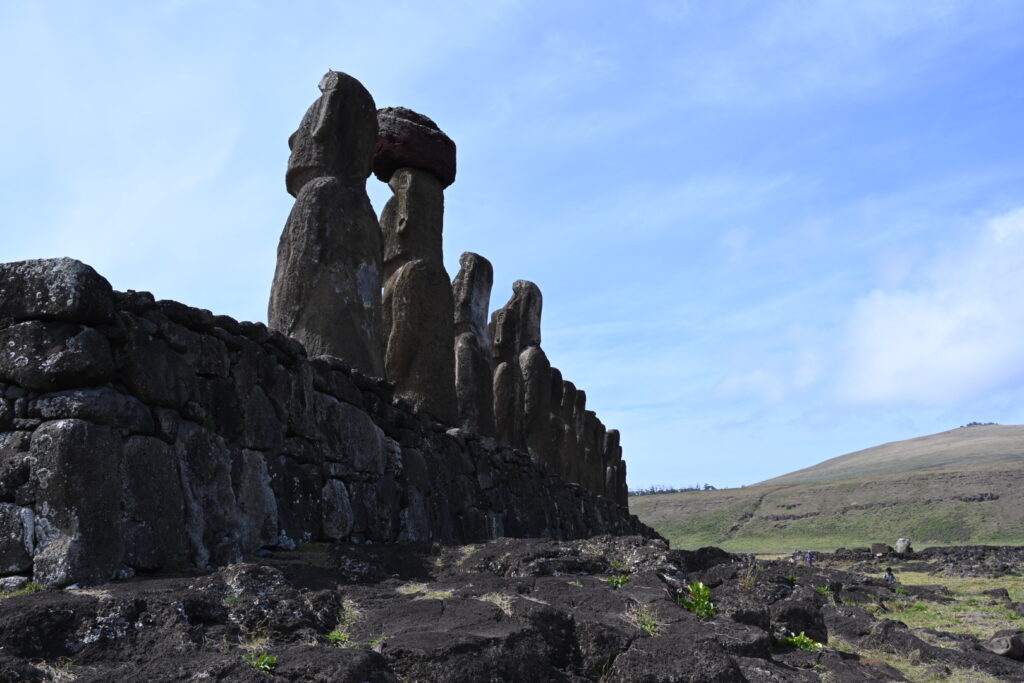
We then continued on to Anakena beach:
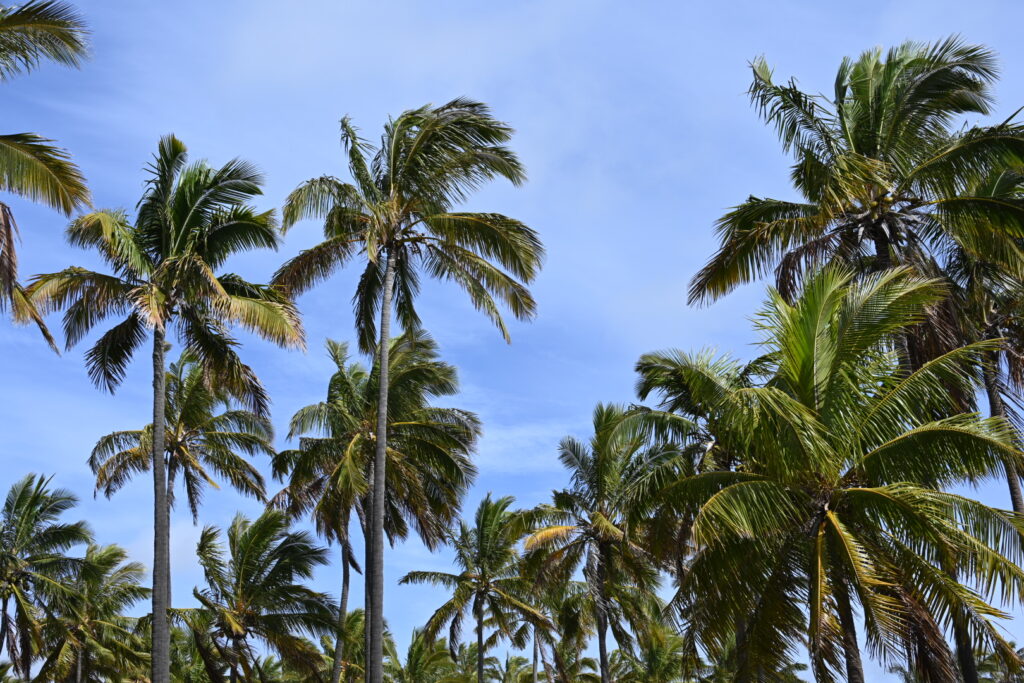
This tends to be Silversea’s default landing spot when the weather is anything less than ideal.
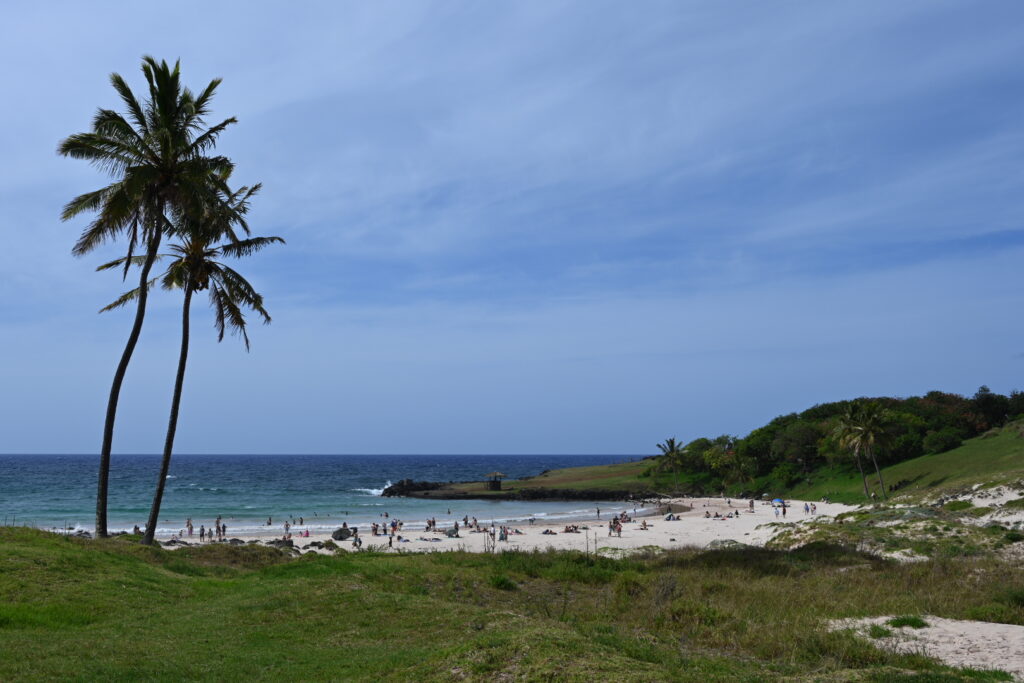
In some ways it would have worked better for us due to our snorkelling ambitions, but we’re also glad of the souvenir opportunities afforded in Hanga Roa.
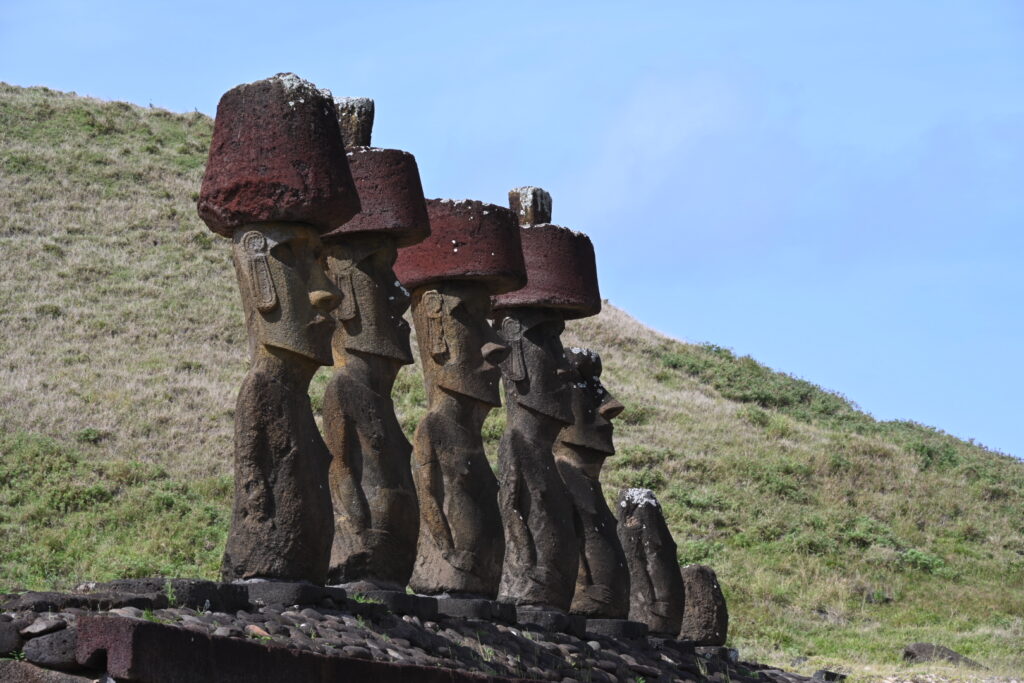
The moai at Anakena are among the best preserved on Rapa Nui, as they were buried in sand – thereby protecting them from erosion.
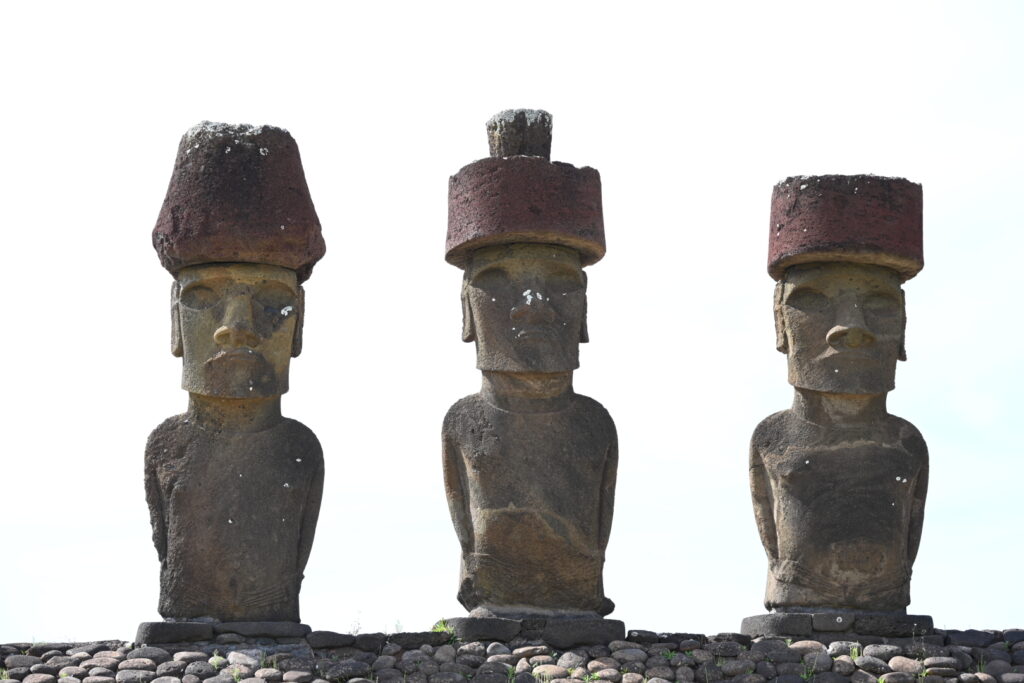
I do not consider myself anywhere near capable of capturing the essence of Rapa Nui’s founding stories, so I will instead defer to this excellent passage from EasterIsland.travel:
“According to Rapa Nui oral tradition, this was the first place where the island’s original settlers came ashore, led by the founding king Hotu Matu’a.
Legend tells of a wise man named Haumaka, who had a dream in which a spirit guided him across the ocean to a fertile, uninhabited land. In this dream, he saw that the homeland of their people—Hiva, a now-lost mythical continent—was destined to vanish. The only way to survive was to seek a new home: a solitary island in the middle of the ocean, which he called Te Pito o Te Kainga, meaning “the navel of the world.”
Haumaka shared his vision with Hotu Matu’a, who understood that he needed to save his people. So he set out on an epic journey aboard two large canoes, together with his family, wise men, and skilled artisans. After weeks at sea, they finally landed at Haŋa Rau, the royal bay we now know as Anakena.
There, his wife Vakai a Heva, pregnant during the voyage, gave birth on the beach to their son Tu‘u Maheke. That child became the first Rapa Nui, marking the birth of a new civilization in the heart of the Pacific Ocean.”
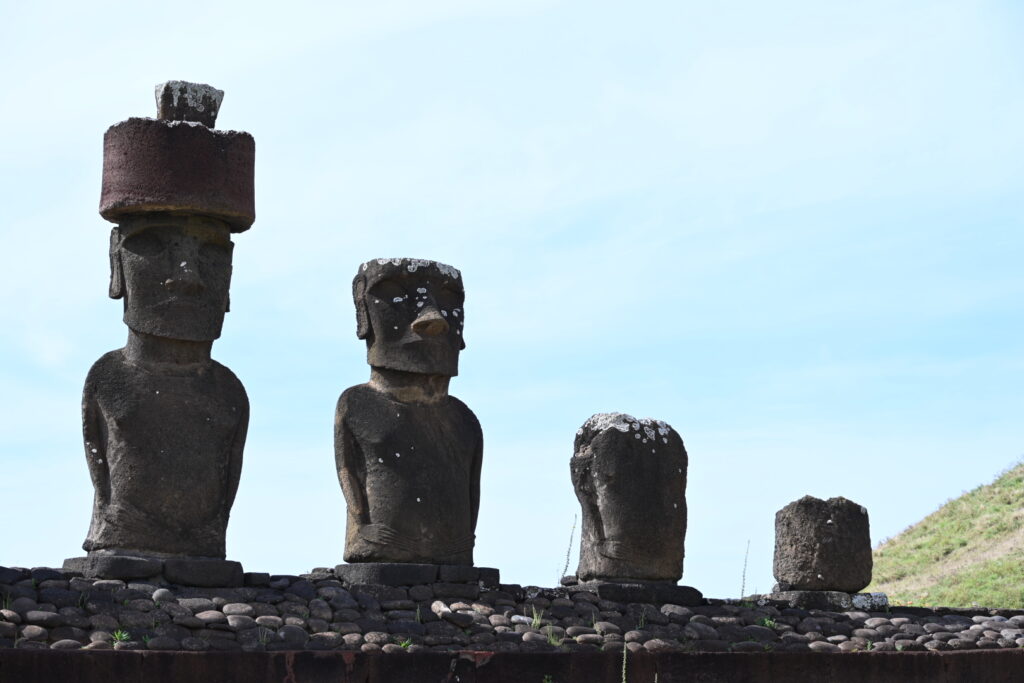
As you might expect, this is the best spot in which to view the intricate detailing on the back of the moai:
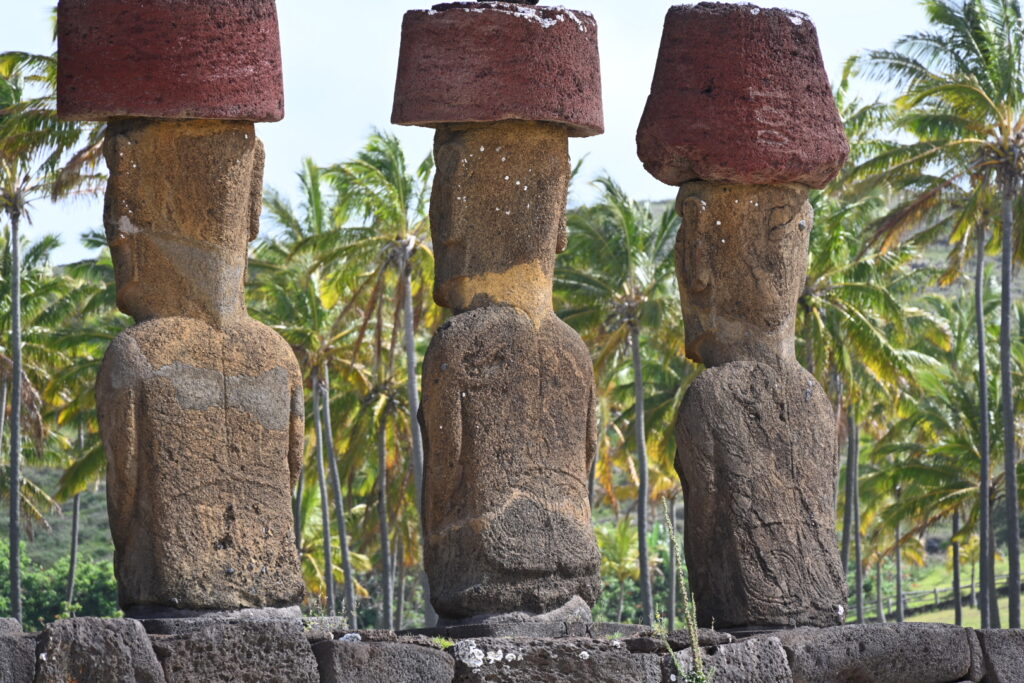
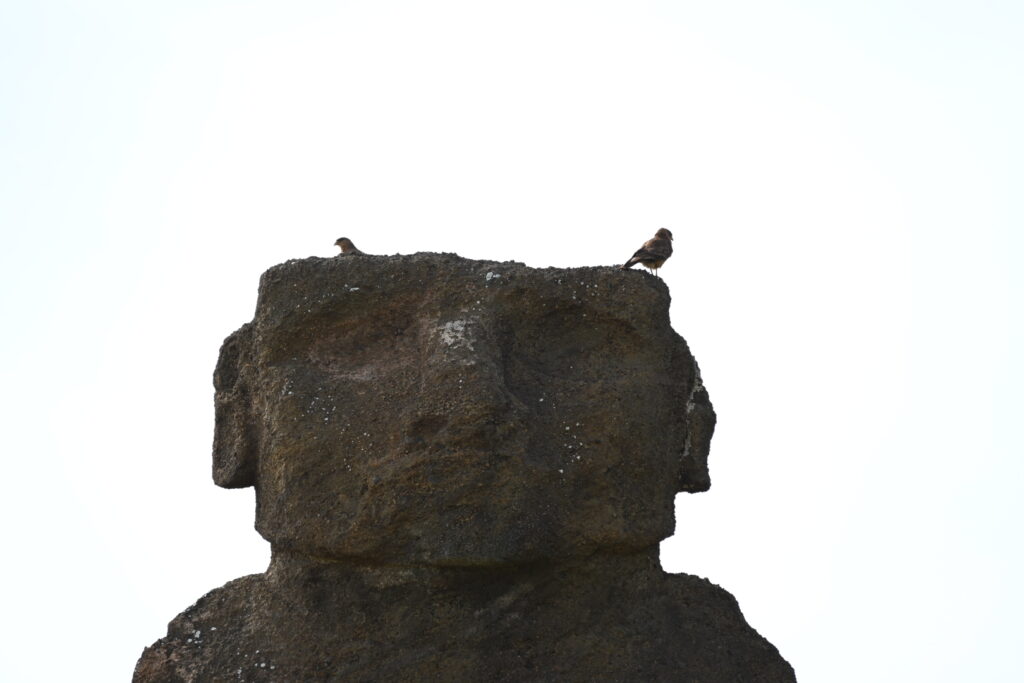
The local wildlife is still out in full force
We then took the kids off to have some time to play at this stunning beach:
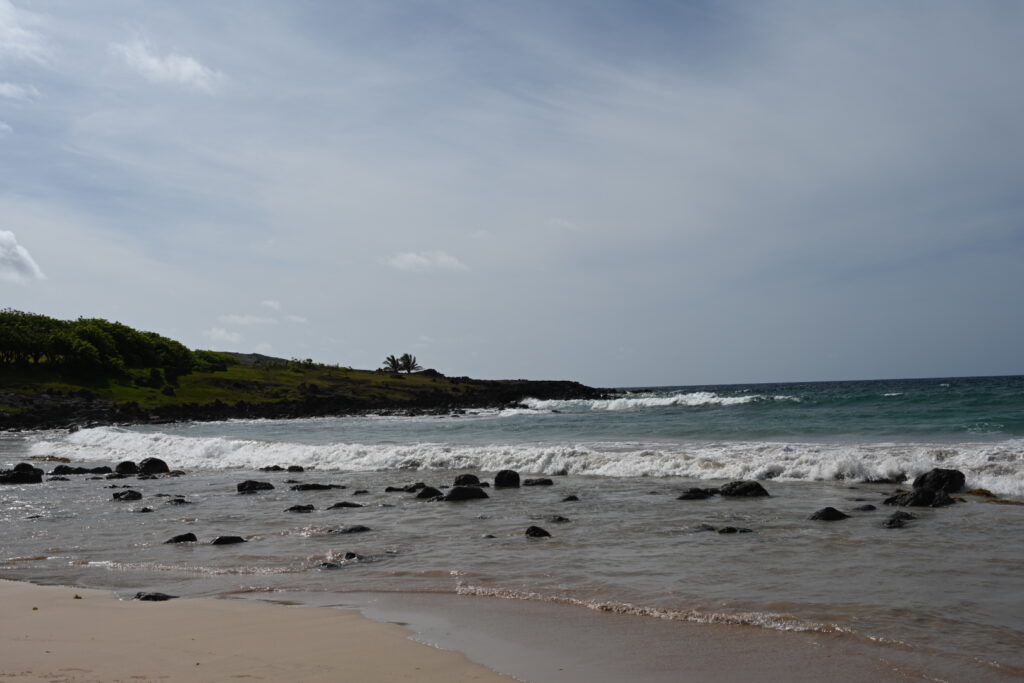
But it wasn’t long before it was time to head back to the bus.
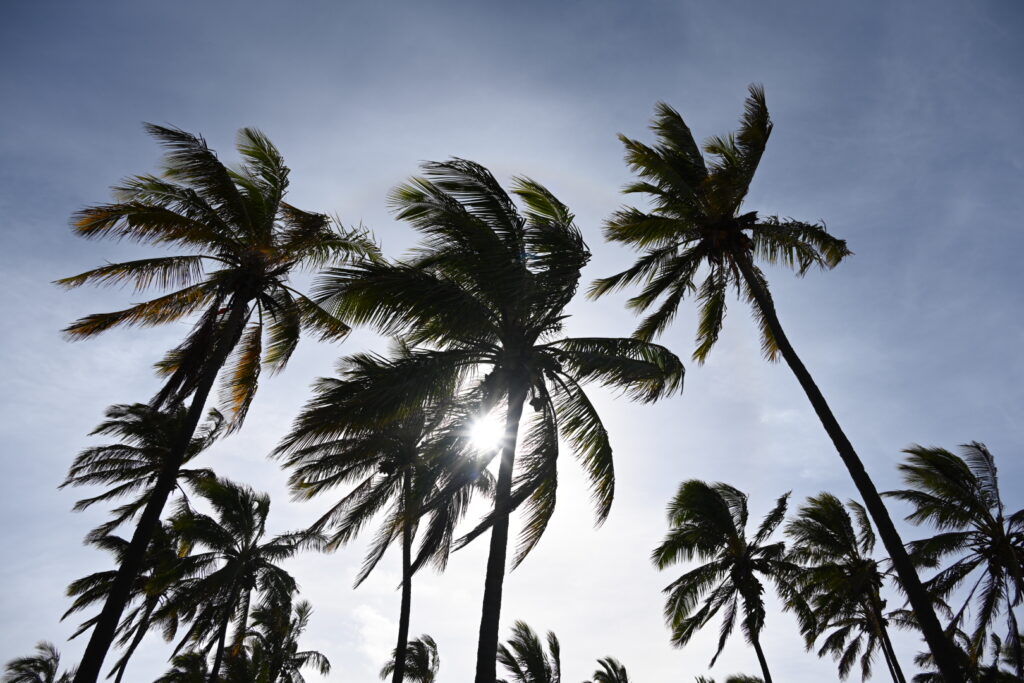
Brief delay as we waited for some of the stragglers to return, but we got back to the dock at around 5:30 pm. We took a few minutes to pick up some stamps and postcards, which we will fill out tonight and mail tomorrow morning. Handy that the shop has a postal box that we can drop those postcards into, even if it’s just a box with wrapping paper and the words “Postal box” written on it.
Back to the Cloud! Much splashier this time, but we don’t care because we’re all having hot showers. Hot showers and Pisco Sours:
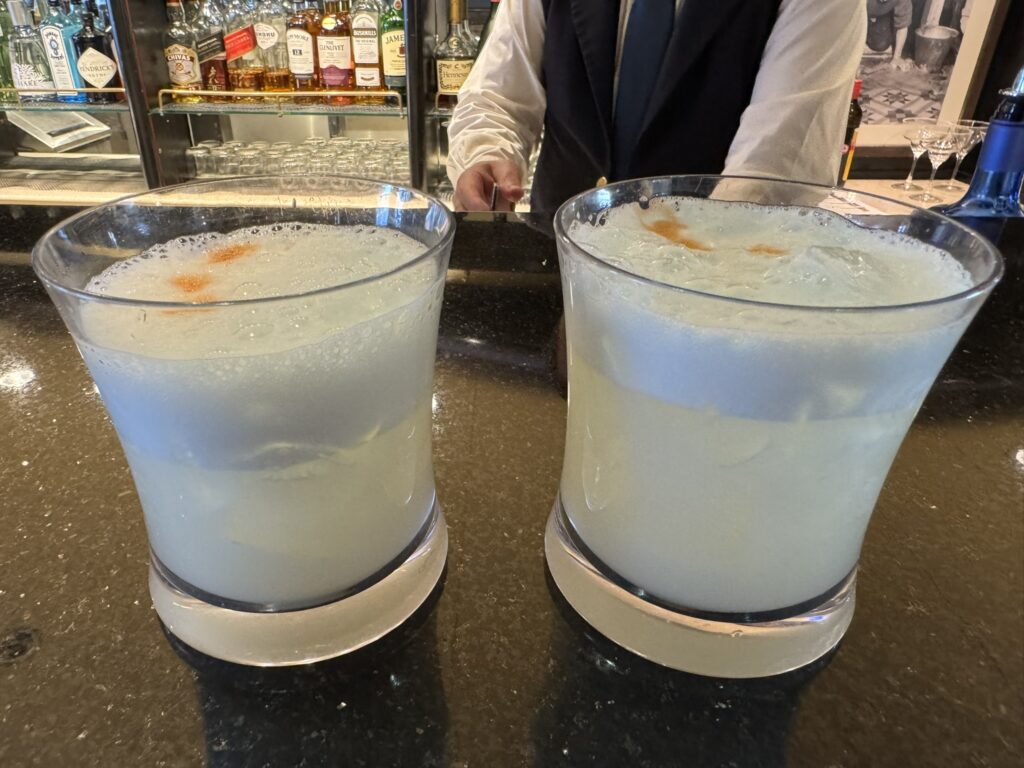
Mmm. Hot Showers and Pisco Sours. Sounds like the title of an Expedition-themed Country and Western song.
Room service tonight – everyone had their favourites, while I branched out and tried the butter chicken and New York cheesecake:
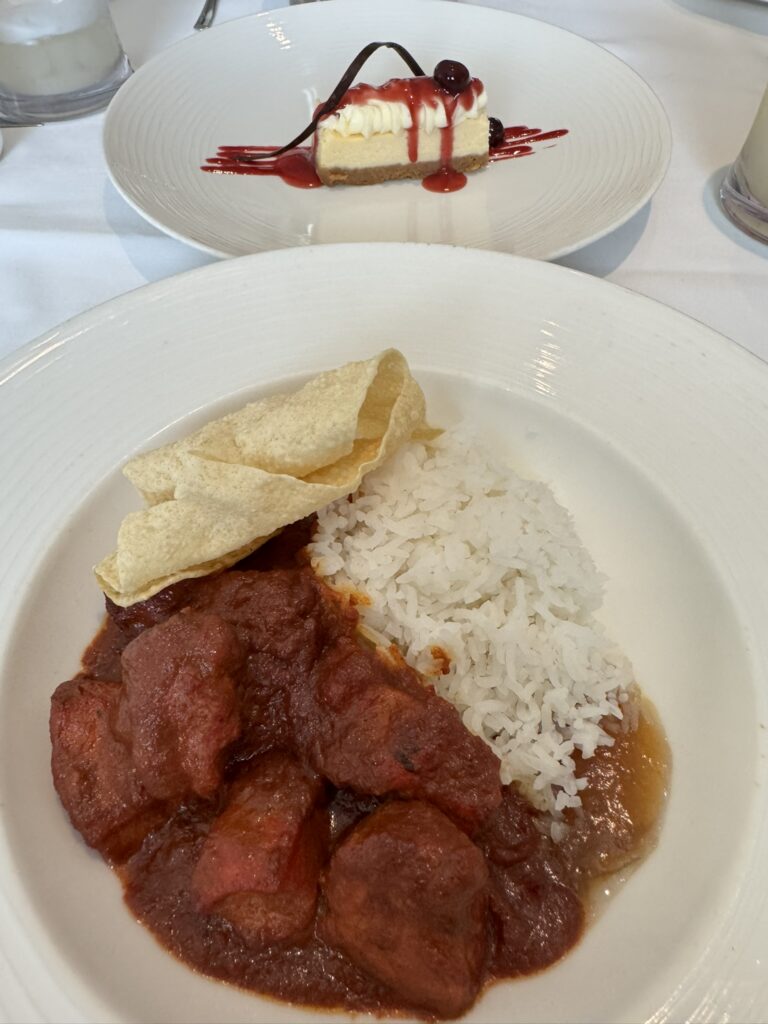
And then it’s off to bed, because tomorrow looks like it will be even busier!
